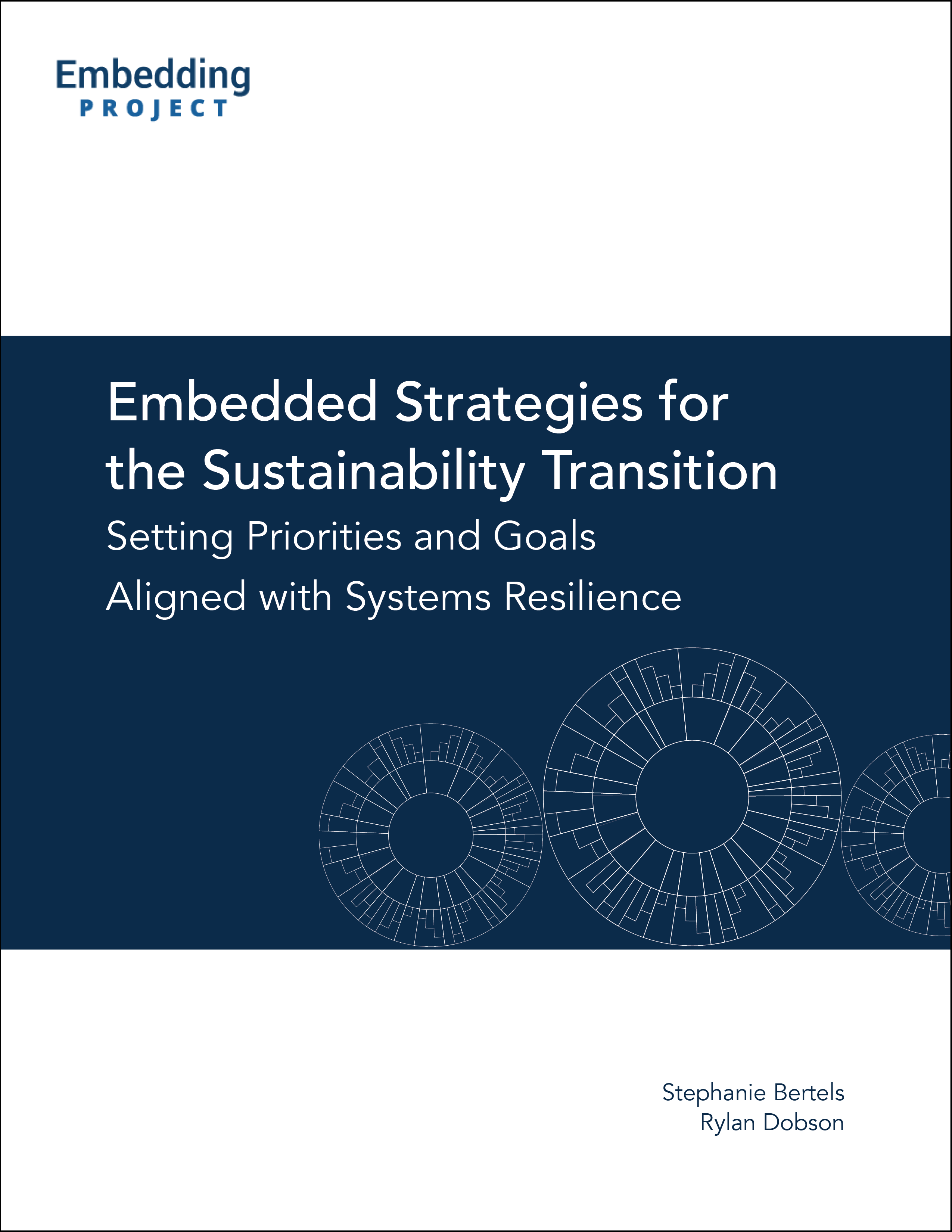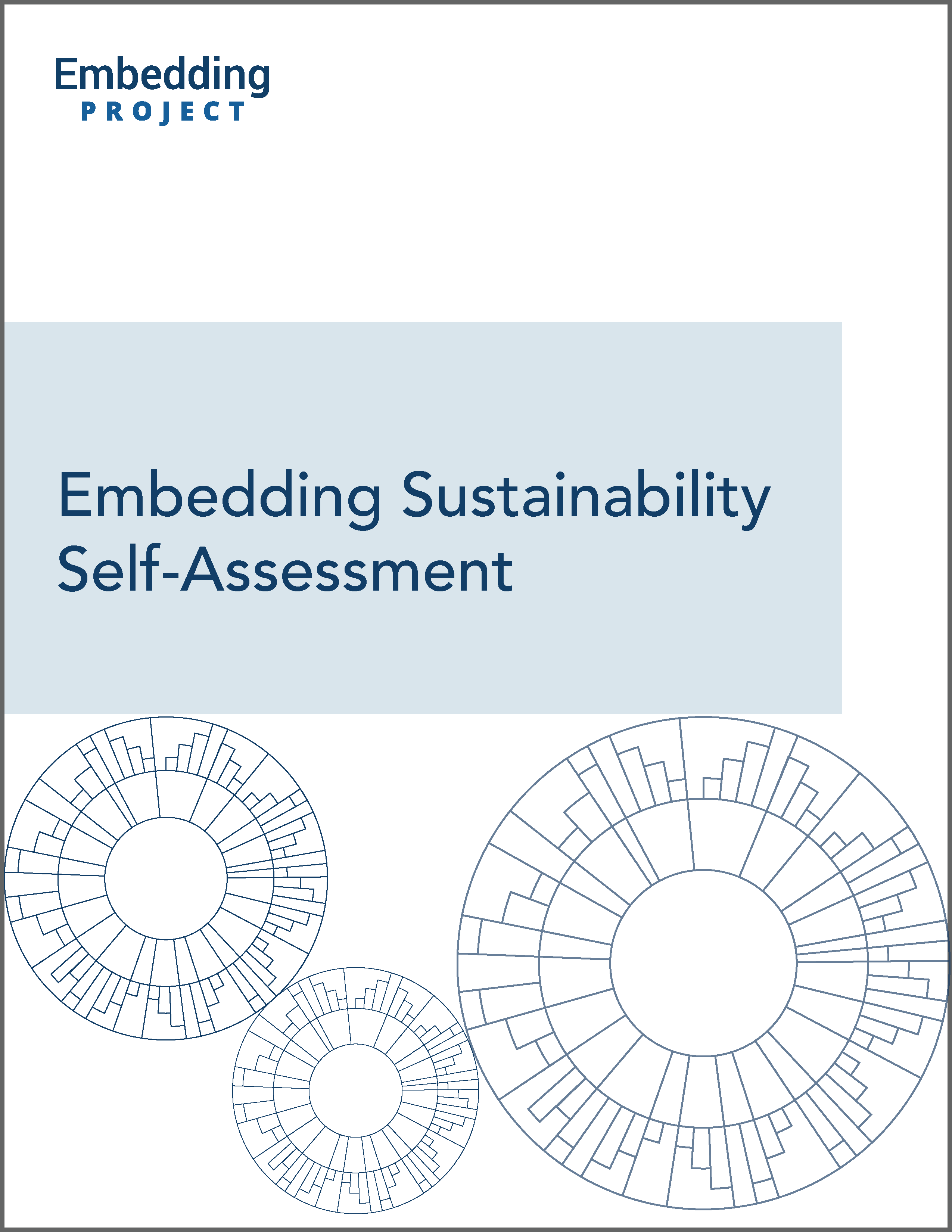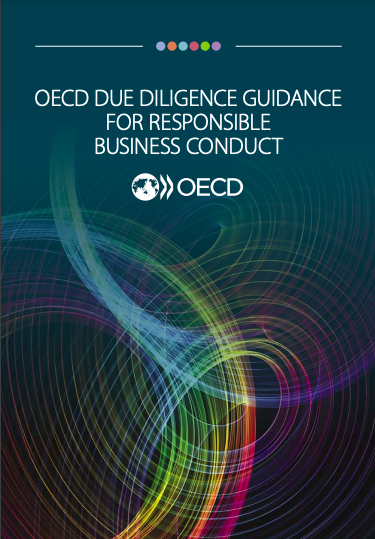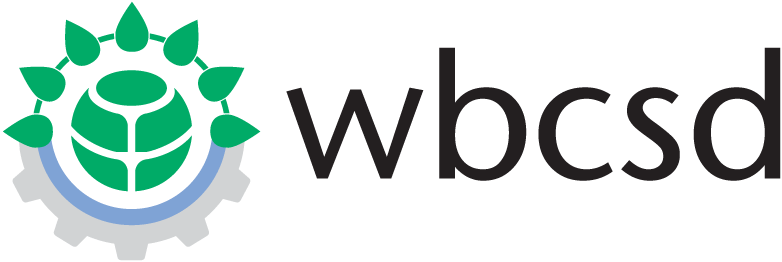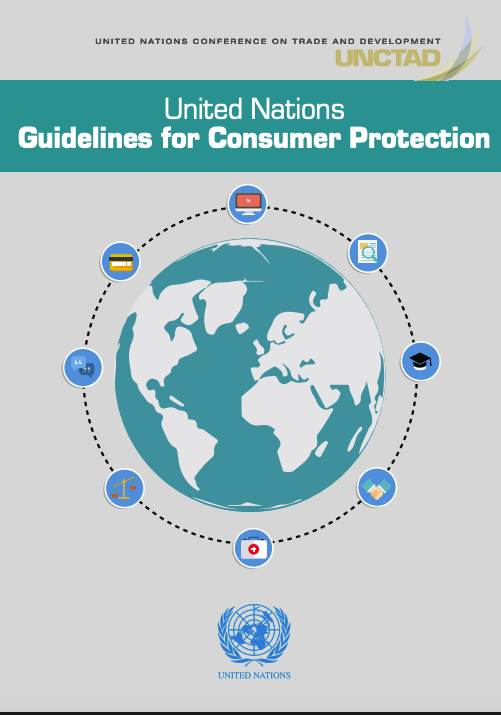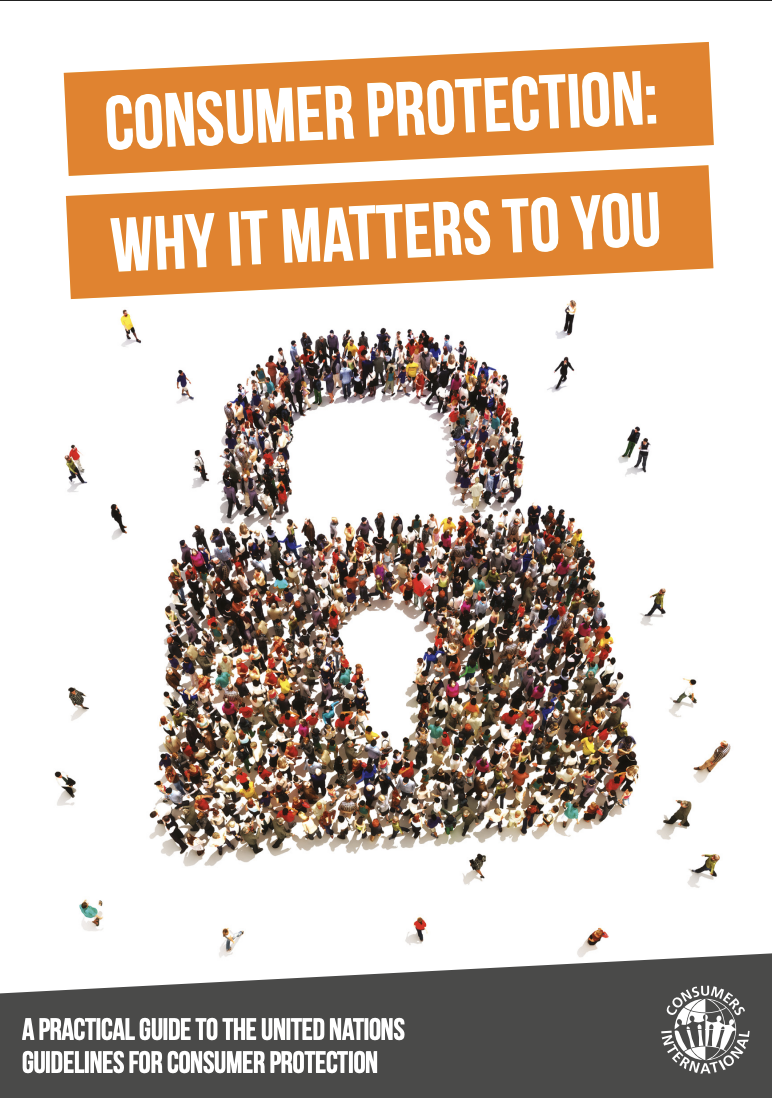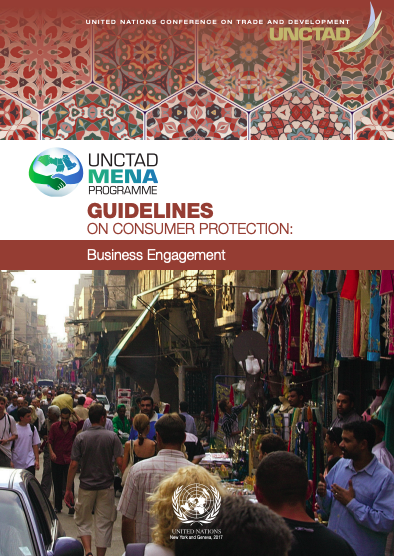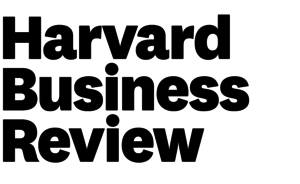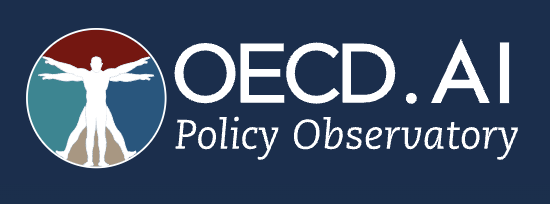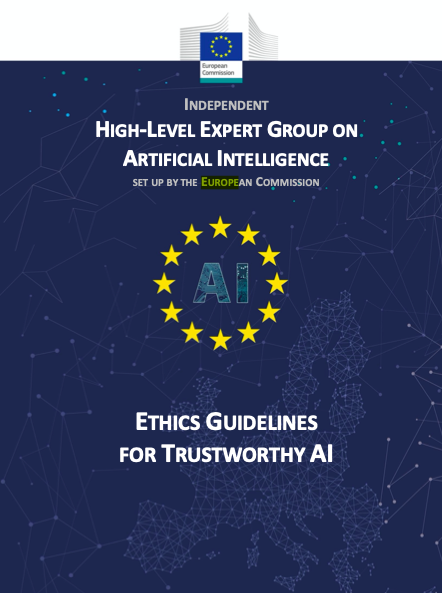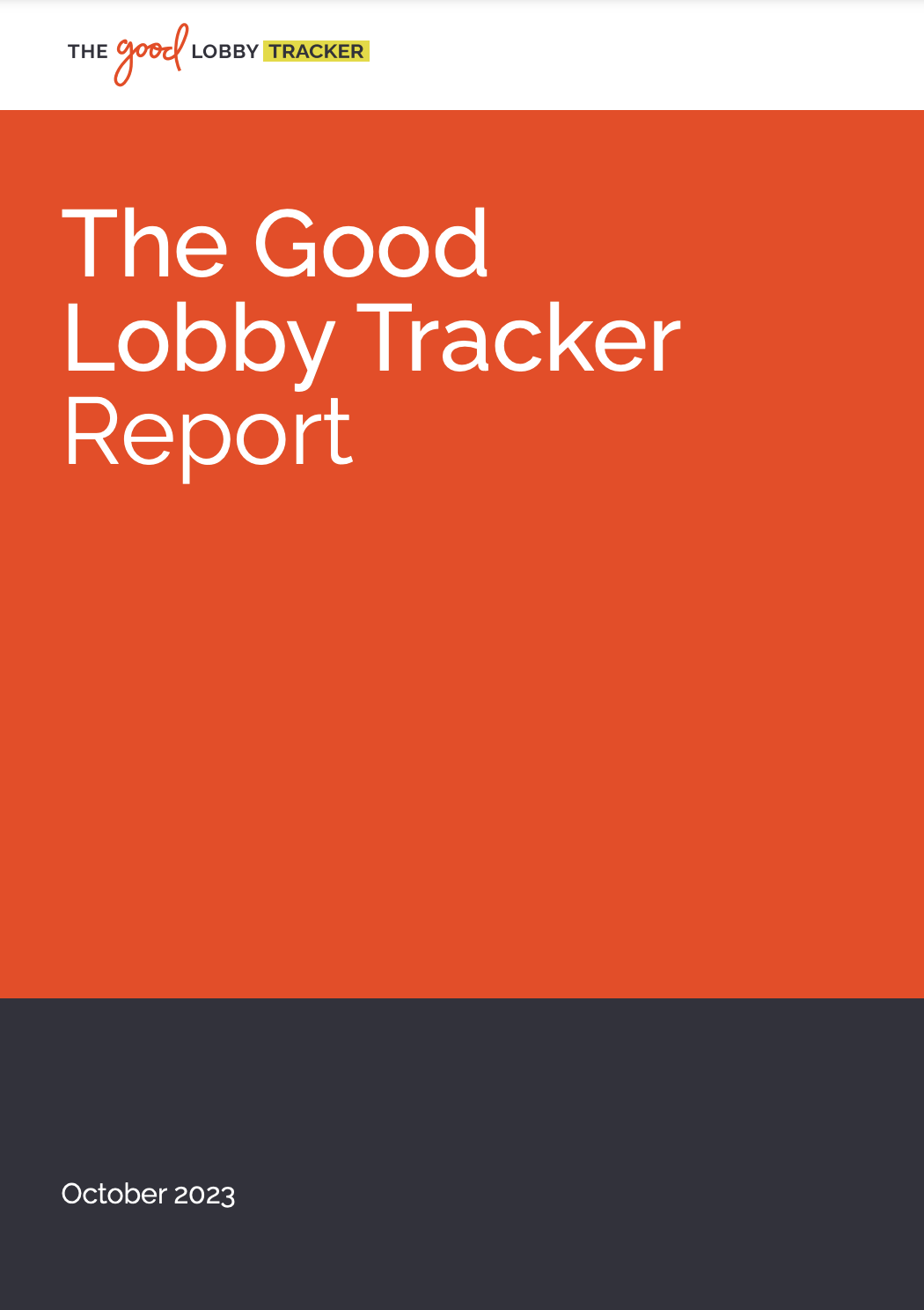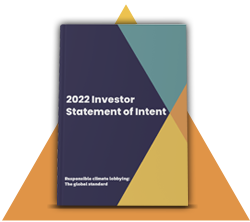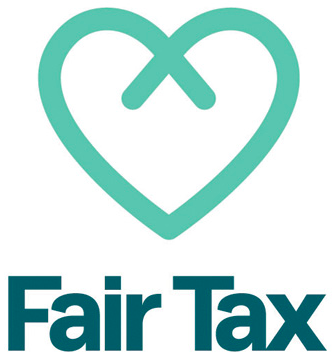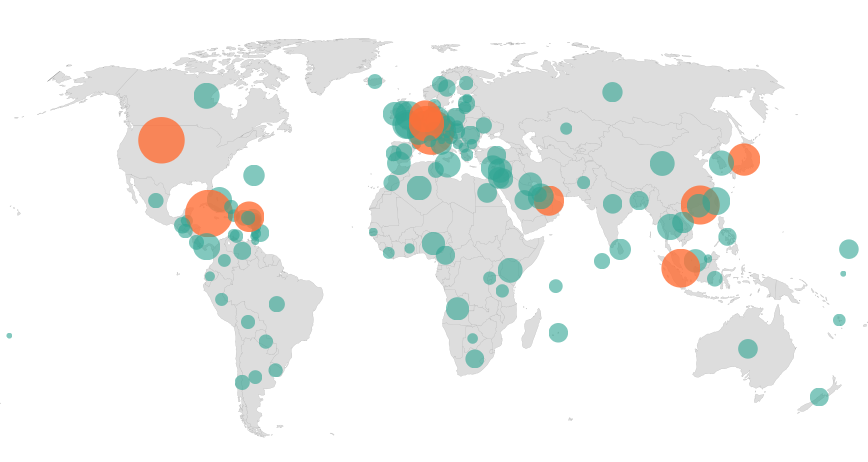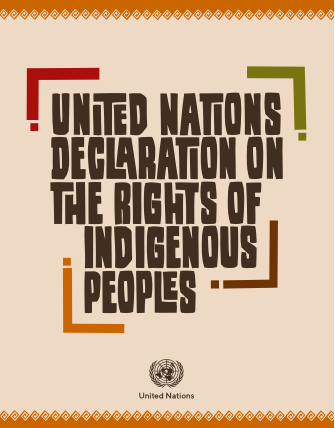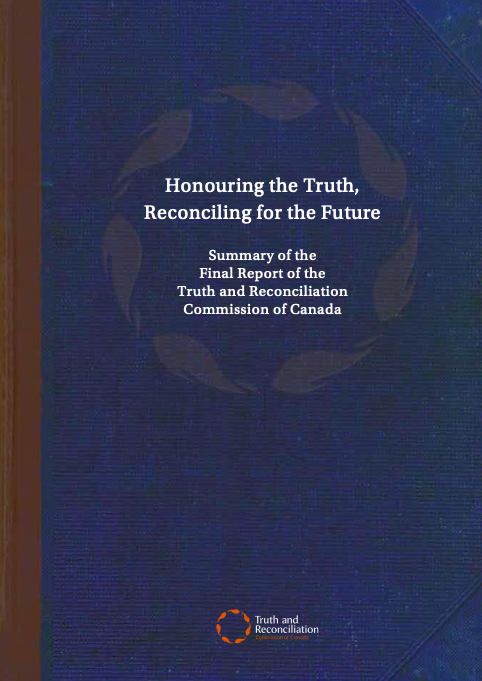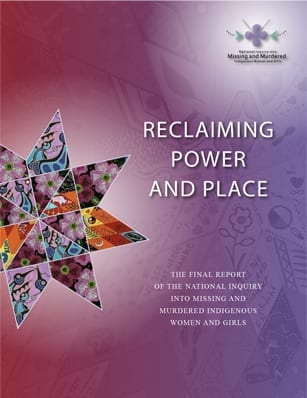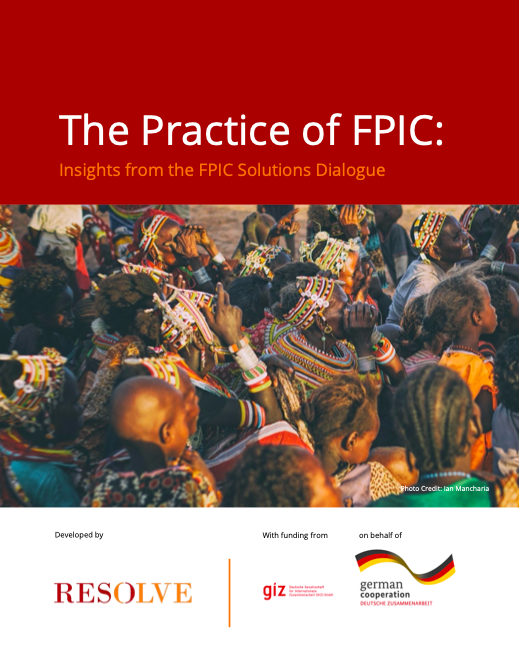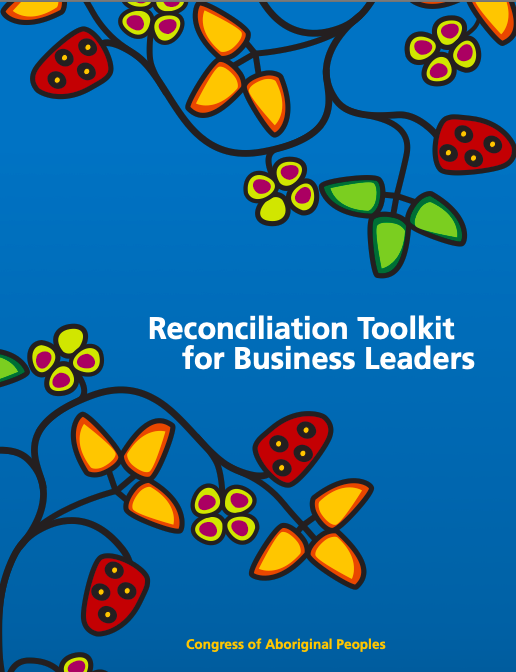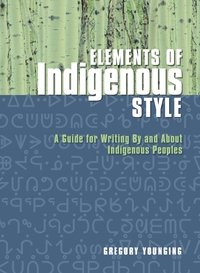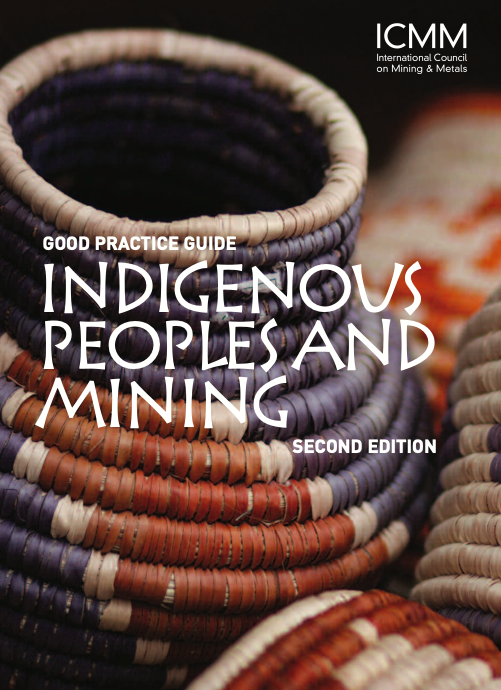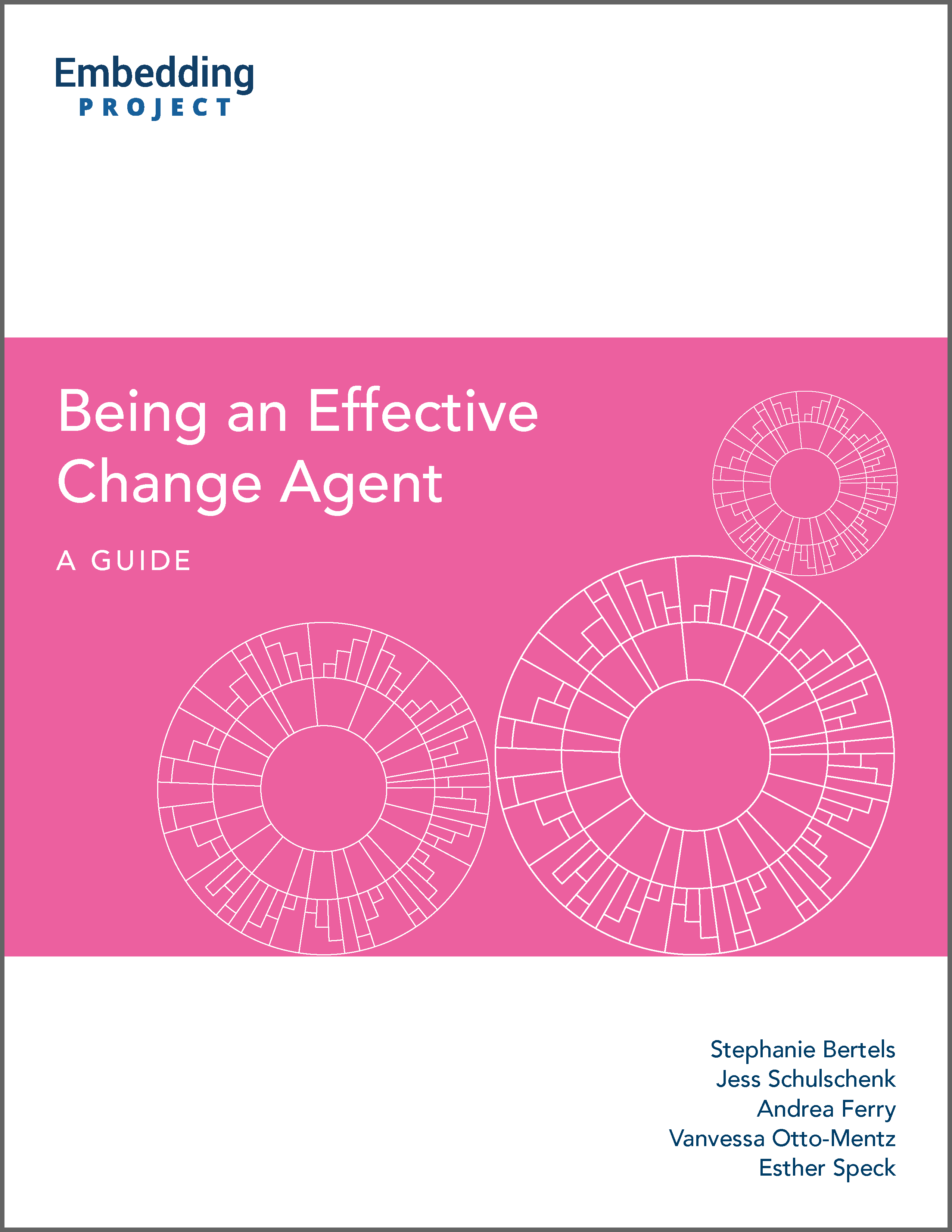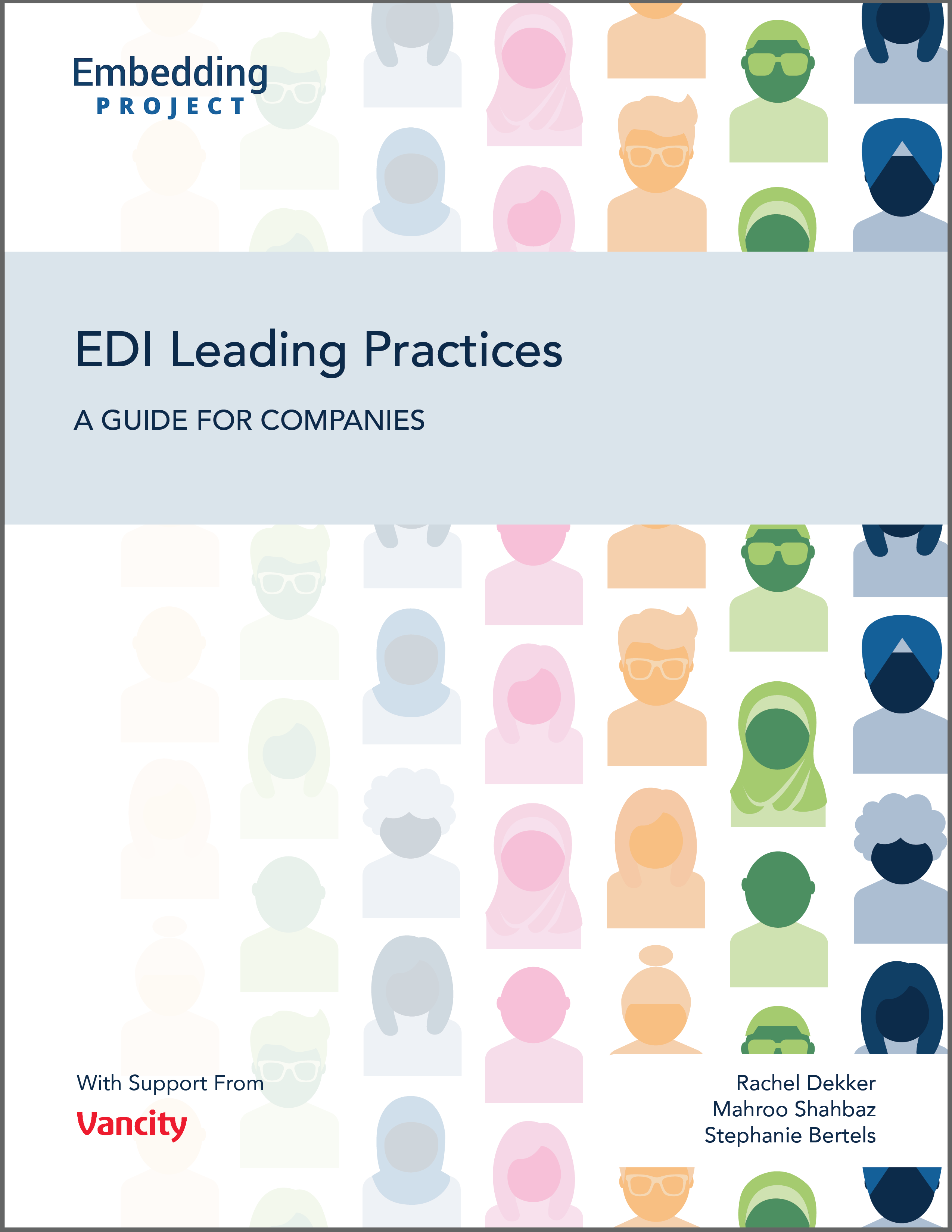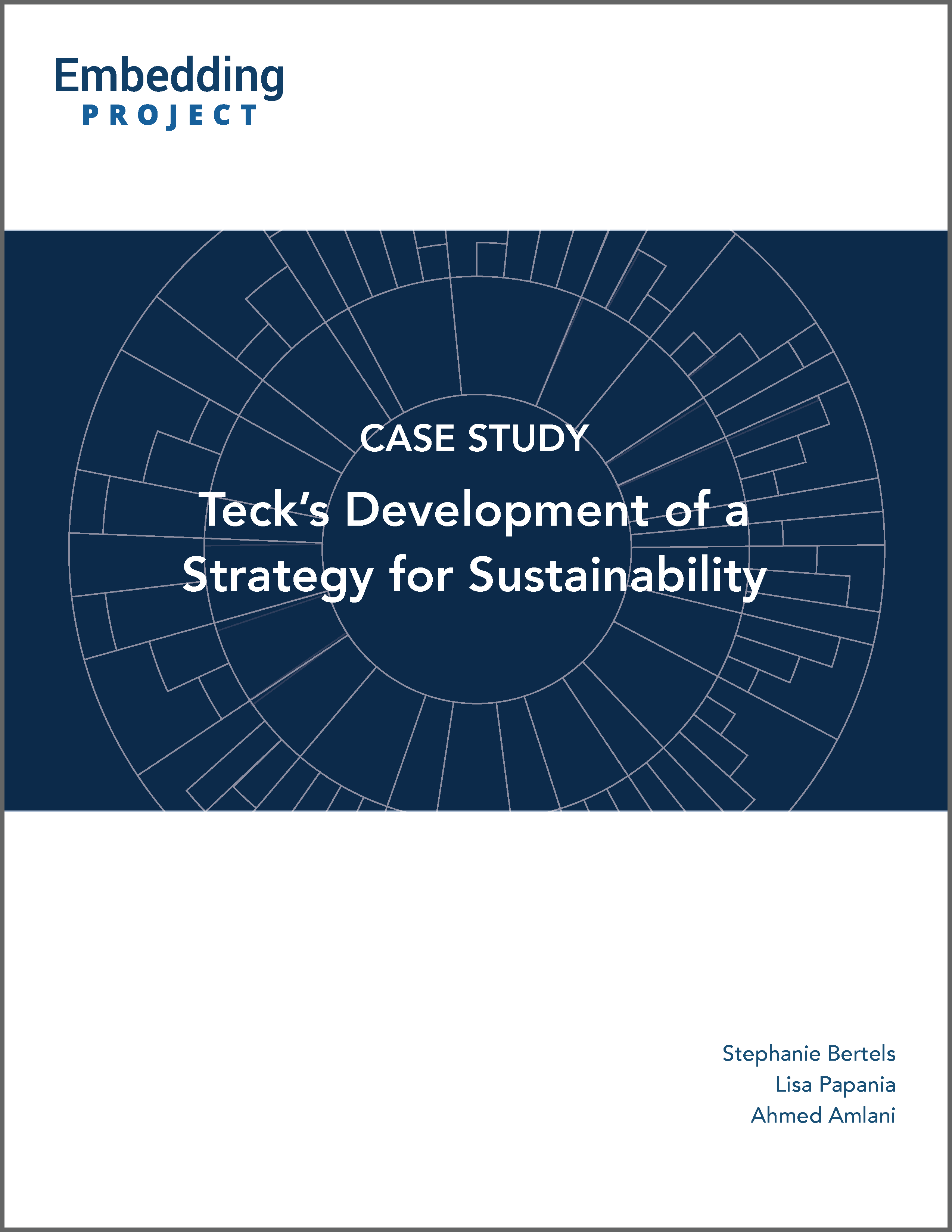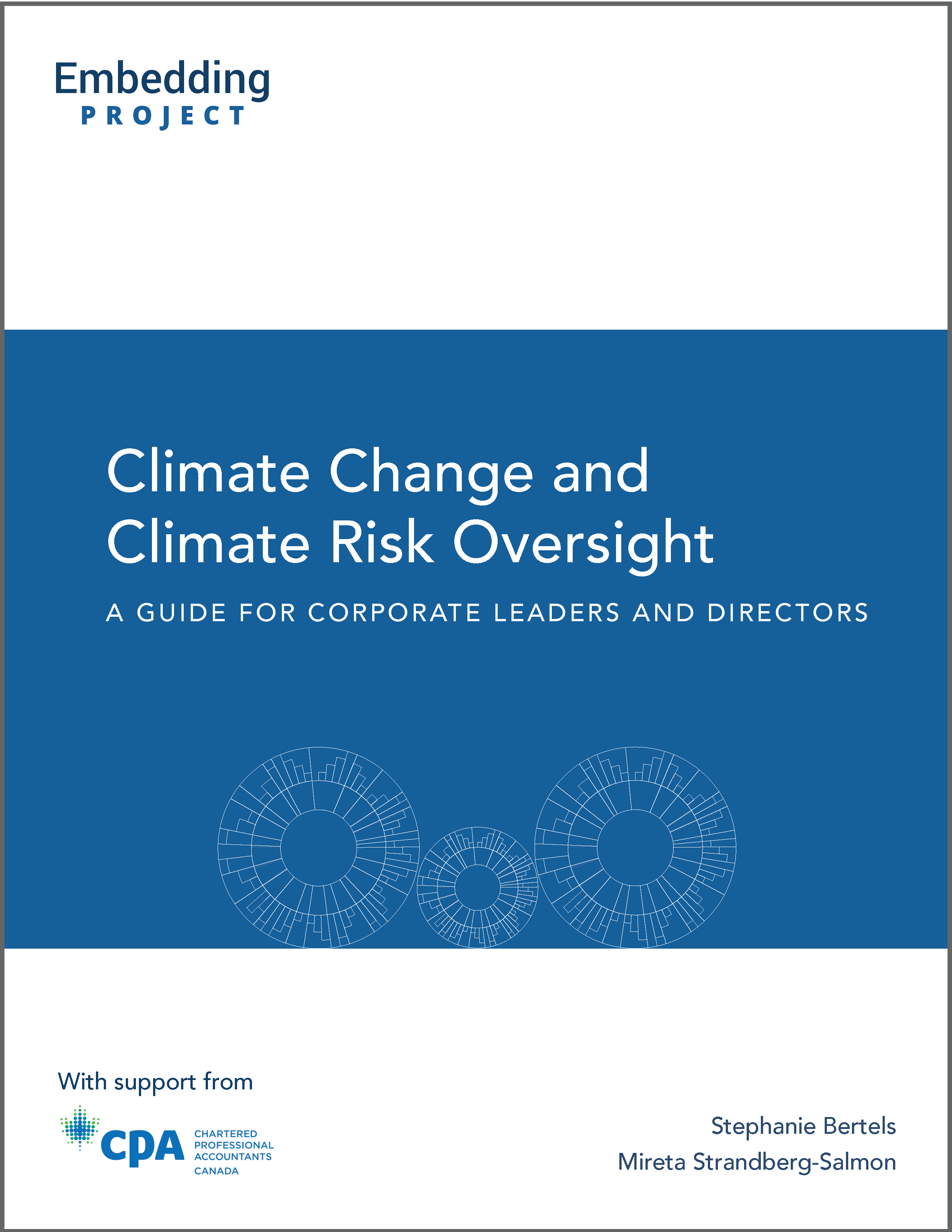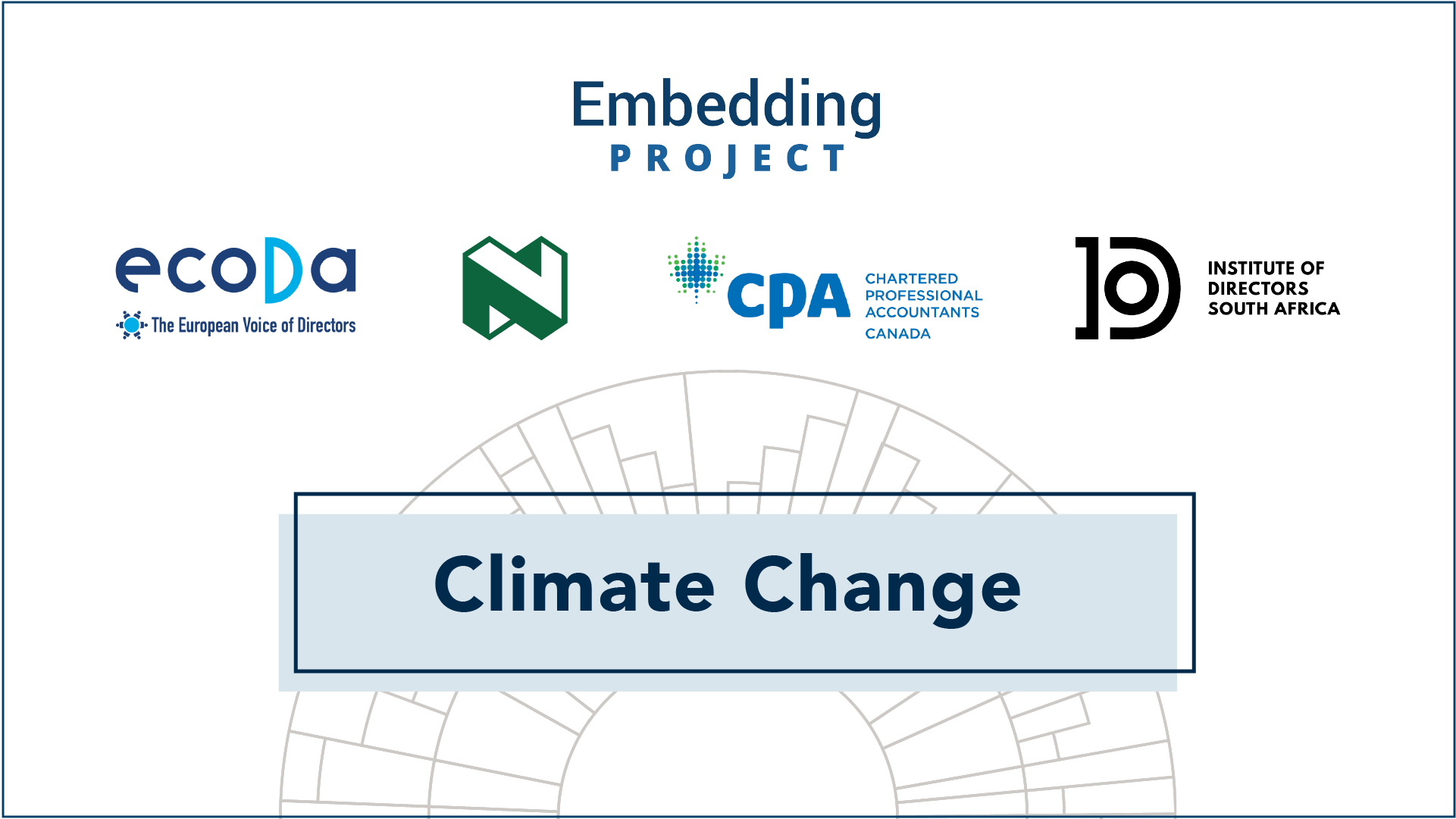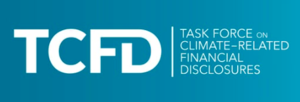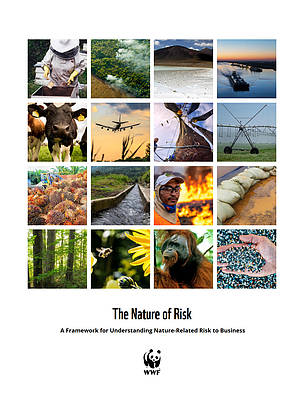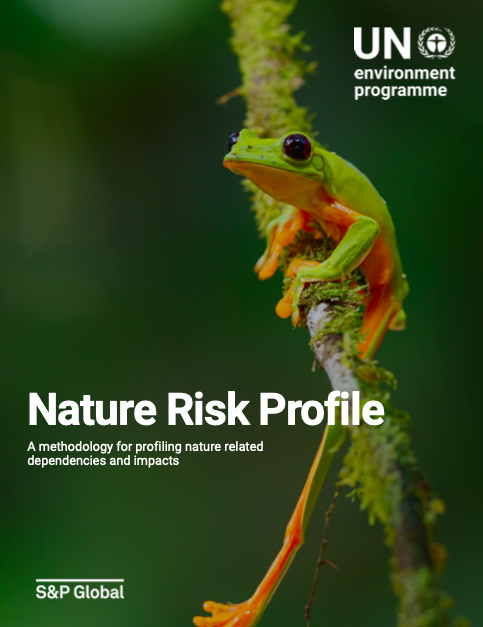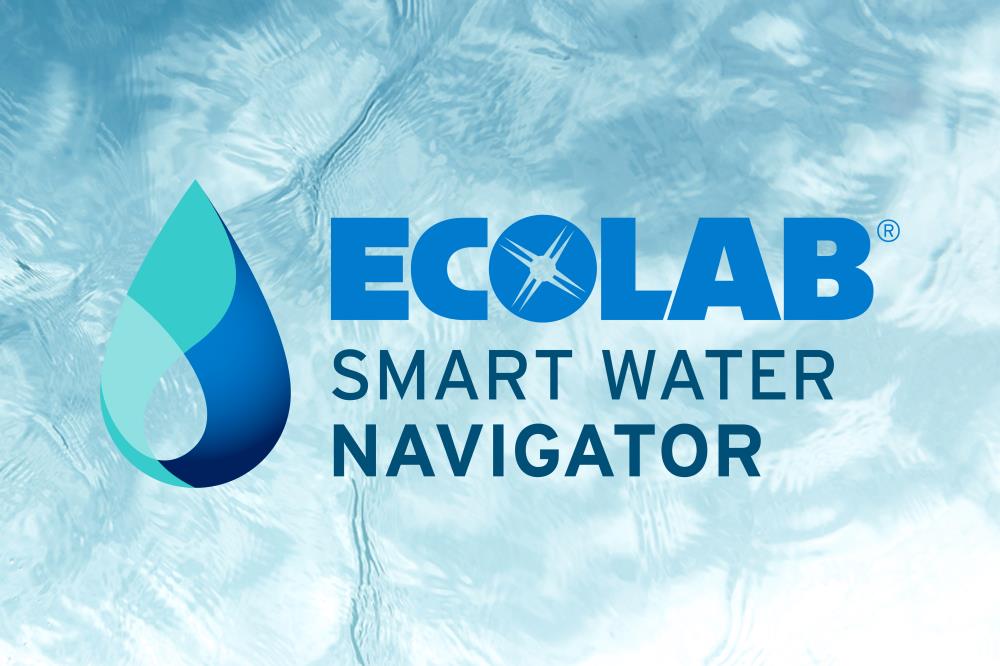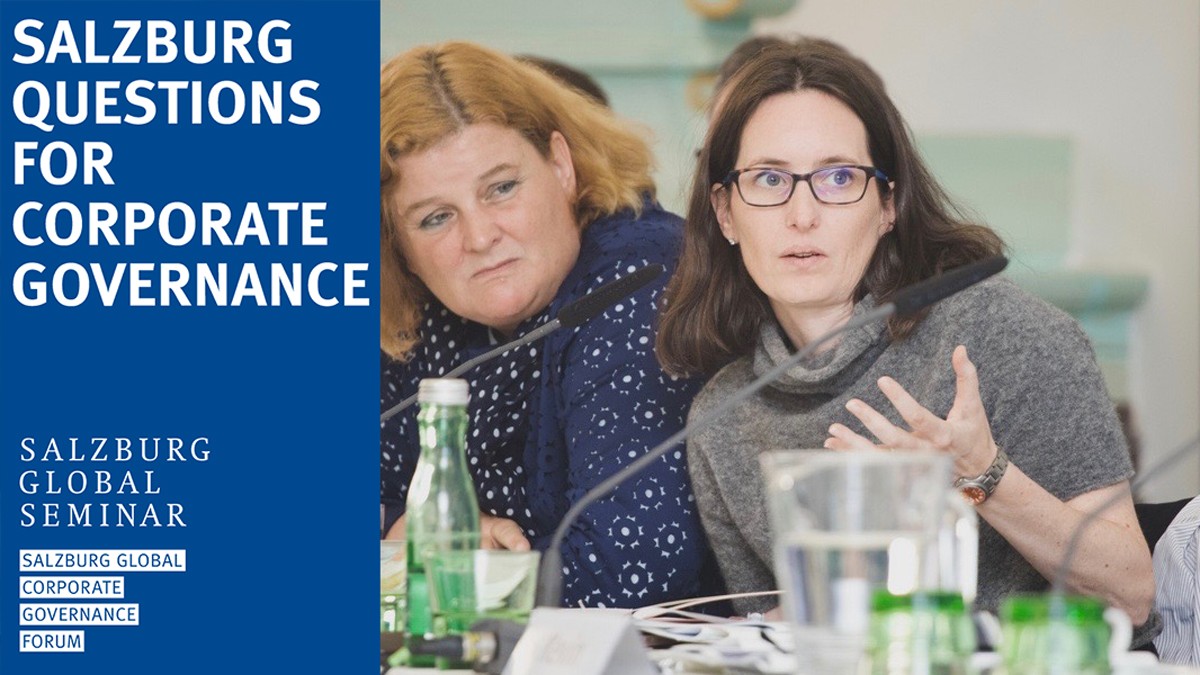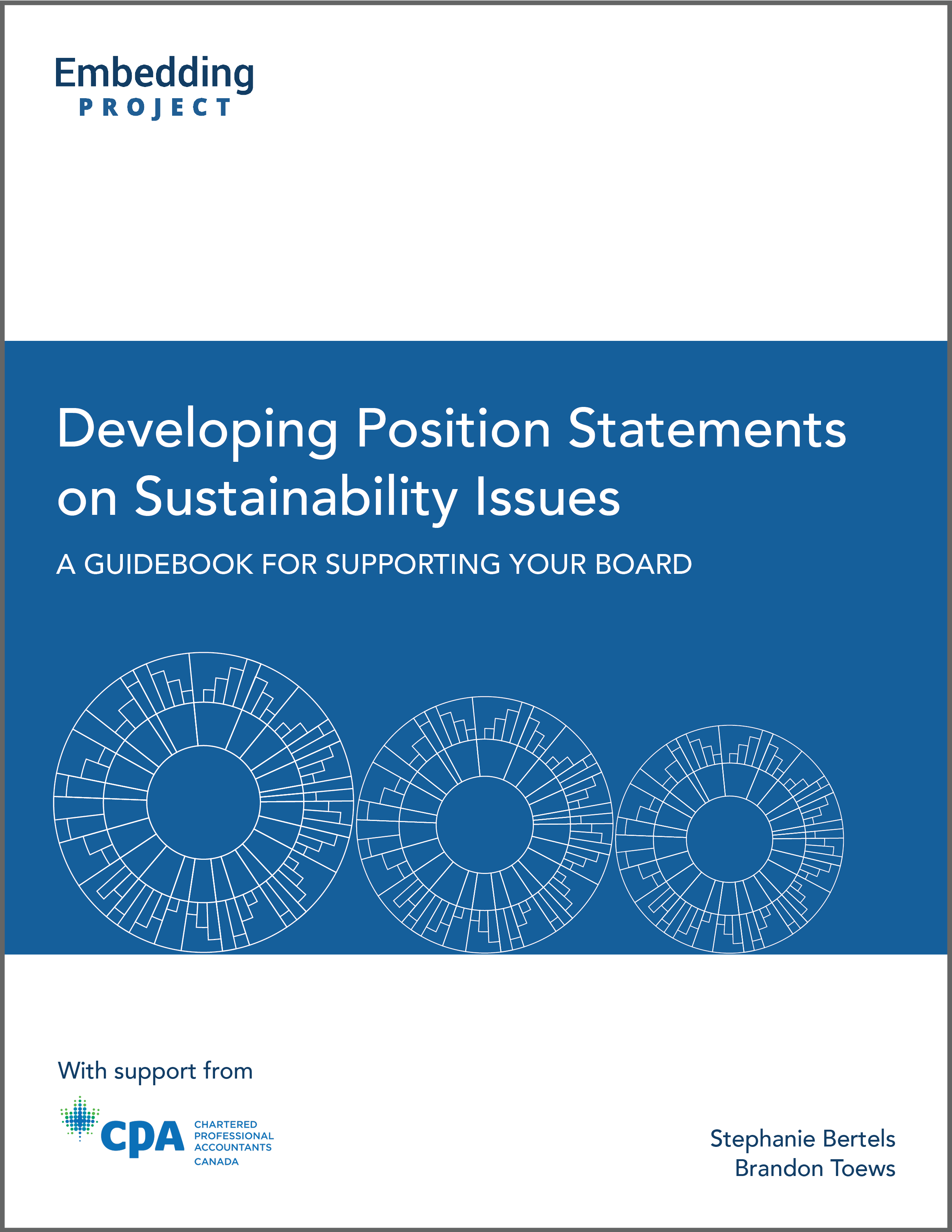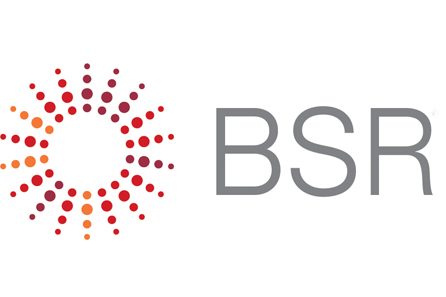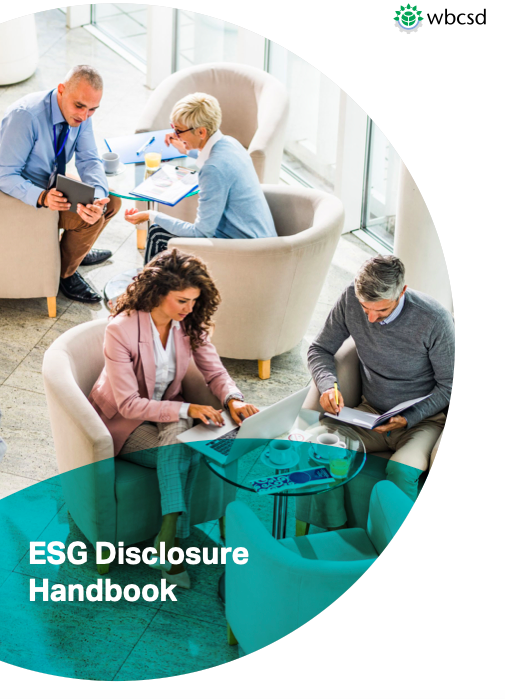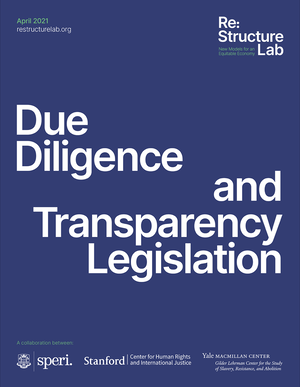Governance & Ethics
Description
This includes the operational principles that support embedded sustainability and the achievement of positive outcomes in each of the other interconnected social and environmental issues outlined in this framework.
Share this Issue on:LinkedIn
Resources
Embedded Strategies for the Sustainability Transition
It is time for companies to take a very different approach to corporate strategy.
Our Embedded Strategies guide helps companies respond to the growing calls for businesses to articulate their purpose and their strategy in alignment with the need to shift the global economy towards the reduction of inequality, a rapid climate transition, the preservation of biodiversity, and the elimination of waste.
This guide will help you to develop a contextual strategy and goals that ensure your company is doing its part to maintain the resilience of key social and environmental systems.
Building on our Road to Context guide with insights from 300+ interviews with senior executives, CEOs, board chairs, and directors, as well as our experiences supporting companies around the world, it outlines resources and tactics that can help your company to scan for emerging issues and risks; understand their implications for your business; understand your impacts and your potential for positive influence; prioritise where it makes sense to direct your efforts; and set your strategy and goals in alignment with delivering systems value.
Embedding Sustainability Self-Assessment
Interested in understanding your own company's journey? Consider undertaking this free, preliminary practices self-assessment.
OECD Due Diligence Guidance for Responsible Business Conduct
These guidelines from the OECD were created to promote a common understanding among governments and stakeholders on due diligence for responsible business conduct. They can help you to understand the importance of due diligence towards identifying, preventing, mitigating, and accounting for actual and potential adverse impacts on the systems your business depends upon. The guide includes plain-language explanations of the OECD's due diligence recommendations; questions related to the overview of due diligence for responsible business conduct; and questions related to the due diligence process, such as identifying and assessing impacts, tracking implementation and results, and communicating how impacts are addressed. Implementing the recommendations of this guide can help you to avoid and address adverse impacts related to workers, human rights, the environment, bribery, consumers, and more.
Fiduciary Duty in the 21st Century
This report offers insight into the debate around whether or not fiduciary duty is a legitimate barrier to investors integrating sustainability into their investment processes. It was produced by Principles for Responsible Investing in collaboration with UNEP and the UN Global Compact. The report is based on interviews with over fifty investors, policy makers, lawyers, and regulators.
WBCSD's ESG Self-Assessment
This exploratory self-assessment was created to evaluate the integration of key sustainability competencies within board-level decision-making. The multiple-choice questionnaire assesses ESG considerations across five core pillars: purpose & business model; risk management; engagement with management; engagement with stakeholders; and non-financial reporting. Towards building a baseline, this tool may be of help to corporate directors, executives, corporate secretaries, risk committees, and other governance and sustainability professionals tasked with assessing the board’s effectiveness of ESG oversight.
People Matter Lead: Enabling leadership for sustainability
This brief from the World Business Council for Sustainable Development explores sustainability skills and competencies for senior leaders, and may help you in identifying where to direct attention towards development within your own company. The brief highlights six key leadership features emerging as common themes among companies: understanding the context, managing complexity and coping with uncertainty, systems thinking, working beyond boundaries, leading change, and enabling innovation.
ESG / Sustainability Governance Assessment: A Sustainable Board Roadmap
The Sustainable Board Roadmap is a tool for boards, management, and other governance professionals and teams to assess and benchmark the board’s ESG / sustainability governance practices. The Sustainable Board Roadmap includes 39 practices for board members, and consists of evaluation questions and a ranking system that allow for a gap assessment of leading practices on ESG oversight by boards. This tool will help improve awareness of emerging trends on sustainability issues, and will help identify which practices are most relevant for your organisation.
Definition of a Social Purpose Business
A social purpose business is one whose enduring reason for being is to create a better world. As pressure mounts on industry to redefine its role in society and to help communities navigate turbulence, it has become paramount for companies to evaluate how their growth and reach can become a uniquely positive force. This short paper from Coro Strandberg can help you to understand what social purpose is and what it is not, as well as how you can distinguish it from mission, vision, and values.
2025 Edelman Trust Barometer
The Edelman Trust Barometer is an annual global survey of more than 33,000 respondents from around the globe. Their reporting covers a range of timely and important societal indicators of trust among business, media, government and NGOs, and can provide business leaders, change agents, and marketing experts with unique insights into trends in public perceptions towards industry. This 25th anniversary edition reveals a profound shift to acceptance of aggressive action, with political polarisation and deepening fears giving rise to a widespread sense of grievance.
Steward-Ownership: Rethinking ownership in the 21st century
This booklet from the Purpose Foundation can help you to better understand how businesses can embed their values and mission into their ownership structure. The first to section explains the importance of ownership to business success and sustainability outcomes; the second section outlines five different legal structures within the umbrella of ‘steward-ownership’ that integrate accountability and mission integrity; and the third section presents case examples of businesses that have transitioned to steward-ownership. The concepts and ideas raised here will be most valuable to business leaders interested in implementing more equitable structures of ownership.
Net Zero Transition Plans: Red Flag Indicators to Assess Inconsistencies and Greenwashing
This report from WWF and others can help you assess the integrity and consistency of net-zero transition plans. It begins by defining greenwashing and how it relates to transition plan credibility, which is a prerequisite for effective capital allocation and climate risk management. It then proposes a framework for assessing transition plan credibility based on a study of 28 transition frameworks. The outcome of this study is a red flag indicator framework that can be used to assess the ambition, credibility, and feasibility of transition plans and prevent greenwashing.
Although the proposed framework was designed for investors, it will also be useful to strategy, sustainability, and finance teams working to develop or improve climate transition plans for their organisation.
Environmental claims and the Competition Act
Canada’s Competition Bureau has released guidelines to help you ensure compliance with the Competition Act when making claims about the environmental benefits or attributes of products or businesses. The guide identifies provisions that are most relevant to environmental claims, and provides principles to help businesses assess whether their environmental claims are in line with the requirements of the Act.
On the rise: navigating the wave of greenwashing and social washing
Misleading communication around environmental and social topics is on the rise, harming progress on sustainability globally and eroding both investor and consumer trust. This article from RepRisk can help you understand recent trends related to greenwashing and social washing. It explains the regulatory response to misleading sustainability-related communications, trends in greenwashing risk exposure, and recent (and growing) attention to social washing risk. The guide will be most useful to sustainability professionals responsible for disclosure, as well as communications, marketing, and enterprise risk teams.
“Net Zero Greenwash”: The Gap Between Corporate Commitments and their Policy Engagement
This study by InfluenceMap can help you understand the risk of greenwashing your climate commitments through misaligned policy engagement. The key findings highlight the prevalence of greenwashing through both companies’ own engagement and that of their industry associations. They show that more than half of companies with climate commitments have been unsupportive of climate policy in at least some cases, and that many companies are actively undermining their commitments by lobbying against climate action. A set of brief examples from ten companies further demonstrates this discrepancy. These insights will be most useful to sustainability, policy advocacy, and communications professionals.
The Greenwashing Hydra
This report from Planet Tracker can help you understand and identify the nuances of greenwashing. It explains the problem of greenwashing, identifies six different types of greenwashing, and provides an overview of the global regulatory crackdown on greenwashing. The report may be of particular value to sales, marketing, and procurement professionals.
Greenwashing Assessment Framework
This tool from the Climate Social Science Network features indicator questions, notes, and examples that can help you to determine if your organisation (or another) is engaging in greenwashing. The tool supports enhanced scrutiny of statements claiming positive social and environmental impact; claims related to organisational practices and their alignment with stated intentions or values; and communications that are poorly defined or excessively broad and could be misunderstood. This resource is a good preliminary screening tool, and will benefit sustainability, legal, and communications professionals, as well as senior leaders.
A Guide to Product Safety Standards
This short article can help you to quickly build a better understanding of product safety standards from around the world. It explains the key benefits of adhering to these standards, as well as notable product safety standards and regulations from the United States, Australia, United Kingdom, European Union, and more.
The ICC Advertising and Marketing Communications Code
The International Chamber of Commerce's (ICC) Advertising and Marketing Communications Code is the international go-to guide for responsible marketing and advertising, and it can help you to build consumer trust with marketing that is legal, decent, honest and truthful, and relevant against global and industry developments. Used as a benchmark for almost fifty self-regulatory codes in countries around the world, it provides a comprehensive range of general provisions on advertising and marketing communications, as well as detailed chapters on sales promotion, sponsorship, environmental claims, and more.
ICC Framework for Responsible Environmental Marketing Communications - 2025 Edition
This framework from the International Chamber of Commerce (ICC) can help you to ensure that environmental claims in your marketing and advertising are truthful and appropriately supported by evidence, that they meet legal and regulatory requirements, and that they reflect the core principles of the ICC Code. Like the ICC Code itself, the framework covers all forms of advertising and marketing communications claims, including digital advertising and social media. It applies to the entire marketing ecosystem, guiding communications practitioners, advertising agencies, publishers, media owners, contractors, market influencers, bloggers, vloggers, ad tech companies, those responsible for preparing algorithms and artificial intelligence technologies for marketing communications purposes, and more.
The framework provides a summary of the principles of the ICC Code, as well as commentary and guidance to help practitioners apply the principles to environmental advertising. It also provides a checklist that marketers may find useful for initially identifying and evaluating their environmental claimms; a comparative chart that identifies relevant general provisions and provides commentary, observations, and suggestions; and a table that describes specific environmental claims or terms and identifies the ICC principles and other considerations that apply when such terms are used.
Designing safe and sustainable products requires a new approach for chemicals
This briefing from the European Environment Agency can help you to ensure that chemical products are produced in a way that maximises their contributions to society while avoiding harm to nature and peoples. To achieve this, it provides a four-step process for factoring sustainability dimensions into the design phase of chemical products.
OECD Recommendation of the Council on Consumer Product Safety
These recommendation on consumer product safety - adopted by the OECD Council in 2020 - outline the key elements that should be at the core of consumer product safety frameworks at domestic and international levels. They promote a consistent approach to product safety rules across jurisdictions in order to increase certainty and efficiency for all stakeholders. The recommendation calls for the establishment of robust consumer product safety regulatory and policy frameworks that provide for a consumer right to safe products and rapid alerts when unsafe products are on the market or are the subject of a ban or a recall; are informed by sound evidence and data sources; and pay specific attention to vulnerable consumers.
How to Write a Retail Return and Exchange Policy (+ Free Template)
This short article from ReverseLogix can help you to draft a return and exchange policy. It explains the importance of a carefully crafted policy to the success of the return process; highlights seven key elements to consider; and provides a simple template to help you get started.
Advertising Standards
The Responsible Advertising and Children (RAC) programme was established to bring together brand owners, agencies, and the media at a global level to anticipate and understand societal and parental aspirations regarding responsible marketing communications and children. This short primer can help you to understand advertising self-regulation and the benefits it provides.
Our Right to Repair
This article from Leyla Acaroglu can help you to understand why repair is a right, why our current linear economy - including both the actors within it and the design principles that underpin it - is structured to oppose the right to repair, and how this contributes to inequity. It highlights some of the tactics that companies use to prevent (or disincentivise) repairs and upgrades, and makes a compelling case for why repair should be mainstream and accessible. It also examines key trends and developments related to the Right to Repair Movement.
Inclusive design: why it’s more than just a quick makeover
This short article from IMD can help you to understand the benefits of embracing the principles of inclusive design, and it provides a simple step-by-step approach (featuring approachable and practical frameworks) for better ensuring that your products and services meet the needs of all consumers.
What is inclusive design?
This short primer from the Inclusive Design Research Centre can help you to better understand and define inclusive design, as well as differentiate it from universal design.
The Inclusive Design Guide
This guide from the Inclusive Design Research Centre can help you to advance the practice of inclusive design, including within digital design, the design of services, the built environment, and physical products. The guide features a broad range of insights and provides a collection of practices, tools, and activities that describe specific ways in which inclusive design can be put into action. This resource can be applied to processes like workshops, meetings, and conferences, and is applicable to professionals in a broad range of roles.
Microsoft Inclusive Design
Microsoft has produced a broad range of inclusive design guidance materials to help you practice new skills, develop new concepts, and prototype inclusive solutions. These guidebooks include inclusive 101 guidance; inclusive design for cognition; inclusive design for mental health; and more. Microsoft has also developed case studies, screens, worksheets, activity cards, and other resources for advancing inclusive design.
United Nations Guidelines for Consumer Protection
These guidelines are a valuable set of principles for setting out the main characteristics of effective consumer protection legislation. They can help you to better understand the ways in which UN member states, businesses, and civil society can promote consumer protection in the provision of public and private goods and services.
Guide on Quality-Related Claims
This guide from Singapore's Competition & Consumer Commission can help you to make clear and accurate product claims. It includes five key principles and a checklist that businesses should refer to when making claims related to the qualities, uses, or benefits associated with their products and business.
Consumer Protection: Why it matters to you
This simple and accessible resource from Consumers International can help you to better understand and advance key principles of consumer protection. The guidelines explain eleven "legitimate needs" of consumers (such as access, inclusivity, safety, redress, and sustainability) and provide practical advice to organisations about how best to meet those needs.
Guidelines on Consumer Protection: Business Engagement
Set in the context of the United Nations Guidelines for Consumer Protection, this resource attempts to grow the sphere of concerned stakeholders to include business, not solely as a subject or recipient of consumer protection law and policy but equally with a responsibility to comply. It explains the responsibilities of companies to comply and highlights positive and negative incentives; explores business obligations and consumer rights in the Middle East and North Africa; explains compliance in relation to the MENA region and UN business principles; features guidance to business, including how to move beyond compliance; and more.
Global Digital Compact
The Global Digital Compact is a comprehensive global framework for digital cooperation and governance of digital technologies and artificial intelligence. Negotiated by 193 Member States and informed by global consultations, the Compact commits governments to upholding international law and human rights online and aims ro bring together governments, private sector entities, civil society organisations, and other stakeholders to close digital divides and deliver an inclusive digital economy; build an inclusive, open, safe, and secure digital space; and strengthen international data governance and govern AI for humanity.
NIST Cybersecurity Framework
This framework from the National Institute of Standards and Technology (NIST) can help you better manage cybersecurity risks. It provides a common language and systematic methodology for managing this risk, and features a three-component framework. The “Framework Core” unpacks five pillars of a holistic cybersecurity program (Identify, Protect, Detect, Respond, and Recover); the “Implementation Tiers” help you to prioritise your cybersecurity program activities, as per your goals, risk appetite, and budget; and the “Profiles” section helps you to identify areas to improve.
To see how other organisations have implemented the framework, see the “Success Stories” page.
NIST Privacy Framework
The NIST Privacy Framework (PF) is a voluntary tool that can help you to identify and manage privacy risk and to bring privacy risk into parity with your broader enterprise risk portfolio. The framework is composed of three components: Core, Organisational Profiles, and Tiers. The "Framework Core" provides an increasingly granular set of activities and outcomes that enable organisational dialogue about managing privacy risk; "Organisational Profiles" are a selection of specific functions, categories, and subcategories from the Core that your organisation has prioritizsd to help manage privacy risk; and "Tiers" support communication about whether your organisation has sufficient processes and resources in place to manage privacy risk.
This framework follows the structure of the Framework for Improving Critical Infrastructure Cybersecurity to facilitate the use of both frameworks together.
Global Cybersecurity Outlook 2025
This report from the World Economic Forum can help you to navigate the growing complexity of the digital realm and identify essential actions for supporting resilience ecosystems. Produced in collaboration with Accenture, it examines the cybersecurity trends that will affect economies and societies in the year to come, including advancements in AI and emerging technologies, geopolitical tensions, cybercrime sophistication, the cyber skills gap, regulatory requirements, and supply chain interdependencies. The report is divided into three sections: understanding the complexity in cyberspace, including major disparities and disruptions; decoding this complexity by exploring the cyberthreat landscape, the state of cyber resilience, and more; and navigating this complexity by prioritising cybersecurity as a strategic investment.
ISAO 300-1: Introduction to Information Sharing
This guide from ISAO Standards Organisation can help you understand how to address cybersecurity risks through information sharing, including both ad hoc and structured activities. This guide presents a conceptual framework for joining or forming a formalised Information Sharing and Analysis Organization (ISAO) with other organisations in your sector. It explains information sharing concepts, the types of cybersecurity information you may want to share, how to facilitate information sharing, as privacy and security concerns. The resource will be most useful to IT professionals or others responsible for managing cybersecurity risks.
Data Privacy Handbook: A starter guide to data privacy compliance
This concise resource from PwC can help you to become better acquainted with data privacy and to get started on improving your data privacy practices. It explains why data privacy is important, highlights key concepts and principles of data privacy, and unpacks a ten-step framework for creating an effective data privacy programme. This is a good primer for change agents, leaders, and compliance and legal professionals.
Global Data Privacy and Cybersecurity Handbook
This comprehensive resource from Baker McKenzie can help you to navigate the global landscape of data protection, privacy and cybersecurity laws, regulations, and guidance. Updated annually, this handbook provides detailed overviews of a broad range of topics, and allows for sophisticated comparisons of jurisdictions. This resource will be of particular use to information technology and security professionals and legal teams.
Securing the Modern Economy: Transforming Cybersecurity Through Sustainability
This paper from Public Knowledge can show you why cybersecurity should be treated as a sustainability issue. It begins by offering a broad definition of cybersecurity and its role in protecting trust in - and security of - digital infrastructure, including the internet. It then highlights how cybersecurity faces challenges that are parallel to the sustainability field, such as short-termism, tradeoffs, and a lack of resilience. The paper recommends that organisations draw on sustainability management practices to help address these cybersecurity challenges, and outlines the broader implications of cybersecurity for national security and the digital infrastructure that today’s economies rely on. This resource would be helpful for both IT leaders and sustainability professionals.
7 Pressing Cybersecurity Questions Boards Need to Ask
This article can help you to assess your board's understanding of cybersecurity, raise awareness on the issue, and prioritise action. The article highlights five key things directors need to know about cybersecurity, as well as seven questions you can ask to make sure your board understands how cybersecurity is being managed.
Principles of Data Protection
This short resource from the Data Protection Committee provides a brief, high-level overview of the Principles of Data Protection found in the EU's General Data Protection Regulation. These principles include lawfulness, fairness, and transparency; purpose limitation; data minimisation; accuracy; storage limitation; integrity and confidentiality; and accountability. This overview provides an accessible introduction to the principles of data protection, and is a good starting point for sustainability professionals, managers, and senior leaders.
Although these key principles were created with the European Union and European Economic Area in mind, they provide a practical, appropriate, and effective reference point for businesses operating in other regions and jurisdictions.
Developing Your Incident Response Plan
This concise response plan from the Government of Canada is a good primer for developing and implementing a cybersecurity incident response plan. It can help you to identify the information and systems that are of value to your organisation; determine the types of incidents your organisation may face; consider who is qualified to be on the response team; and more. It also details the phases of the incident response life cycle.
Recommendation on Information Integrity
The OECD's Recommendation on Information Integrity represents the first international soft law on information integrity. It aims to provide guidance for policy-makers to promote information integrity in line with the universal human rights of freedom of opinion and expression. This resource can help you to better understand and support global efforts to advance information integrity.
Cyber Security Readiness Goals: Securing Our Most Critical Systems
The Canadian Centre for Cyber Security’s Cyber Security Readiness Goals (CRGs) were developed in response to the growing susceptibility of critical infrastructure (CI) to cyber threats. This guide provides an introduction to the CRGs, and explains how they were developed and how they can be used to enhance cybersecurity and minimise potential risks to society, public safety, and the overall stability of the Canadian economy. The CRGs can be found in full in the Cross-Sector Cyber Security Readiness Goals Toolkit.
Although these goals were developed for critical infrastructure, and for Canadian businesses and multinational firms operating within Canada, the recommendations herein are applicable to all organisations, regardless of geography or jurisdiction.
Cross-Sector Cyber Security Readiness Goals Toolkit
This resource from the Government of Canada provides concrete actions that can elevate your company's cyber security posture. It presents 36 foundational goals for improving cyber security, grouped into the six pillars of the National Institute of Standards and Technology (NIST) Cybersecurity Framework 2.0. It then matches each goals with intended outcomes; associated risk, such as tactics, techniques, and procedures (TTPs) from MITRE ATT&CK, addressed by the goal; recommended action; and relevant references.
Although these goals were developed for critical infrastructure, and for Canadian businesses and multinational firms operating within Canada, the recommendations herein are applicable to all organisations, regardless of geography or jurisdiction.
United Nations Global Principles For Information Integrity
The United Nations Global Principles for Information Integrity provide a holistic framework to guide multi-stakeholder action for a healthier information ecosystem. This framework consists of five principles for strengthening information integrity, and include societal trust and resilience; healthy incentives; public empowerment; independent, free, and pluralistic media; and transparency and research. These principles are grounded in international law, including international human rights law, and complement the relevant United Nations Guiding Principles on Business and Human Rights, the UNESCO Guidelines for the Governance of Digital Platforms, the UNESCO Recommendation on the Ethics of Artificial Intelligence, and more. The guide also features calls to action for a broad range of actors, including governments, industry, media, and civil society.
Data Protection Laws of the World
DLA Piper's Data Protection Laws of the World Handbook can help you to navigate the complex landscape of privacy and data protection laws worldwide. It provides an extensive overview of key privacy and data protection regulations across more than 160 jurisdictions.
The Ethics of Managing People’s Data
This article identifies five critical issues that companies need to focus on to prevent abuse of data. These include the 'Provenance' of the data, the 'Purpose' for which it will be used, how it is 'Protected', how the 'Privacy' of the data providers is ensured, and how the data is 'Prepared' for use. This resource will be particularly beneficial to senior leaders, sustainability change agents, IT professionals, and anyone involved with data oversight and data-related compliance.
Ransomware: How to prevent and recover
This resource from the Canadian Centre for Cyber Security can help you to prevent and respond to ransomware attacks. It explains how ransomware infects devices and provides practical guidance on how to prepare for and recover from such attacks. This resource will be of particular benefit to senior leaders (including CTOs) and IT managers.
OECD Privacy Guidelines
The OECD Privacy Guidelines, or the "Recommendation of the Council concerning Guidelines Governing the Protection of Privacy and Transborder Flows of Personal Data," were the first internationally-agreed privacy principles. Updated in 2013, these guidelines remain a key privacy benchmark, including for the OECD's internal rules and practices.
The Cyber Resilience Compass: Journeys Towards Resilience
This white paper from the World Economic Forum can you to build your understanding of cyber resilience. The paper explains the concept and practical aspects of cyber resilience, emphasising the need to move beyond technical solutions and develop strategies that align with business objectives. It also introduces the Cyber Resilience Compass - a tool that outlines interrelated categories that can help organisations to define their cyber resilience journey, including leadership; governance, risk, and compliance; people and culture; business processes; technical systems; crisis management; and ecosystem engagement. For each of these categories, the paper highlights key practices, examples, and case studies.
A Comprehensive Guide to Data Encryption
This resource is a good, accessible introduction to data encryption. It explains data encryption; the different states of data; and how to protect data in each of those states.
Cyber Governance for Boards
This resource was created to help boards govern cyber risks with confidence. It has three key components: the Cyber Governance Code of Practice, Cyber Governance Training, and the Cyber Security Toolkit.
The Cyber Governance Code of Practice outlines the key actions needed to govern cyber security risks effectively. It sets out the most critical governance actions that boards need to take ownership of and outlines the responsibilities and accountability required at the board level. The Code is built around five key governance principles: risk management; strategy; people; incident planning, response, and recovery; and assurance oversight. Next, the Cyber Governance Training helps boards and directors deepen their understanding of these actions, providing practical insights into why they matter and how to implement them. It features five interactive training modules aligned with the aforementioned principles. Each module includes an overview of the principle, a short video covering a use-case or scenario, multiple-choice questions, printable documents that summarise key points, and more. Finally, the Cyber Security Toolkit offers in-depth resources that correspond to the principles outlined in the Code, ensuring boards have the tools they need to manage cyber risks comprehensively.
Although created by the UK government for boards and directors of both public and private organisations across the UK, the lessons herein are applicable for boards and companies in any country or region.
OECD AI Principles
These principles promote use of AI that is innovative, trustworthy, and respectful of human rights and democratic values. They consist of five value-based principles: inclusive growth, sustainable development and well-being; human-centred values and fairness; transparency and explainability; robustness, security, and safety; and accountability. This resource also includes key recommendations for policy-makers. These principles will be useful to anyone involved in procuring or implementing AI technologies, as well as for leaders who want to build a better understanding of ethical principles and practices.
Ethics of Artificial Intelligence: The Recommendation
Adopted in 2021, the UNESCO Recommendation on the Ethics of Artificial Intelligence is the first global standard on AI ethics. The Recommendation focuses on human rights and fundamental freedoms in the context of AI, providing a framework for the ethical development and deployment of AI systems. It also explores related policy issues such as ethical governance and stewardship, gender, culture, education and research, and more.
The EU Artificial Intelligence Act
The Artificial Intelligence Act is a European Union regulation that establishes a common regulatory and legal framework for AI within the EU. The act covers all types of AI across a broad range of sectors, and - aside from exemptions for national security, military, research, and non-professional purposes - classifies AI applications by their risk of causing harm: unacceptable, high, limited, and minimal risk. Depending on their level of risk, AI applications may be banned outright or required to comply with security, transparency, and quality obligations. The act also established a European Artificial Intelligence Board to ensure compliance and promote national cooperation.
AI Risk Management Framework
The National Institute of Standards and Technology (NIST) has developed this non-sector-specific, use-case agnostic, and practical framework to help individuals, organisations, and societies manage risks related to artificial intelligence (AI). Intended for voluntary use, the AI Risk Management Framework (RMF) was created to improve the ability to incorporate trustworthiness considerations into the design, development, use, and evaluation of AI products, services, and systems. This framework is centered around four core functions that organise AI risk management activities at their highest level, enabling you to better govern, map, measure, and manage these risks.
The NIST has developed a companion resource, the AI RMF Playbook, which provides suggested actions for achieving the outcomes laid out in the AI RMF. The suggestions are aligned to each of the aforementioned sub-categories. The NIST has also launched the Trustworthy and Responsible AI Resource Center, which was developed to support and operationalise the AI RMF and the accompanying playbook.
Ethics guidelines for trustworthy AI
The High-Level Expert Group on AI has created ethics guidelines to promote trustworthy artificial intelligence (AI). According to the guidelines, trustworthy AI should be lawful, respecting all applicable laws and regulations; ethical, respecting all ethical principles and values; and robust, from both a technical and social environmental perspective. This guidance introduces seven key requirements that AI systems should meet in order to be deemed trustworthy and highlights assessment criteria to verify these requirements are being met. This is an importance resource for senior leaders, technology experts, and sustainability change agents of any large organisation that is considering developing and/or implementing AI into their operations. The High-Level Expert Group on AI was set up by the European Commission, the principles and recommendations of their guidance are applicable to every business regardless of industry or geography.
Human Rights Across the Generative AI Value Chain
BSR has produced a series of guides on generative AI to support responsible AI practitioners and to encourage greater transparency in the field of human rights and genAI. BSR conducted a human rights assessment to identify and assess the actual and potential human rights risks and opportunities associated with genAI throughout the value chain. They then created a series of practitioner guides that advise those working on responsible AI on how to incorporate a human rights-based approach to their work.
Together, these nine guides address the following topics:
Overview of Responsible AI Practitioner Guides
Guide 1: Fundamentals of a Human Rights-Based Approach to Generative AI
Guide 2: Governance and Management
Guide 3: Impact Assessment
Guide 4: Risk Mitigation
Guide 5: Conducting Stakeholder Engagement
Guide 6: Policies and Enforcement
Guide 7: Aligning Transparency and Disclosure Practices with Human Rights Responsibilities
Guide 8: Remedy for Generative AI-Related Harms
Manifesto for a Responsible and Sustainable Artificial Intelligence
These principles and practical specifications from Forética can help you to ensure that the development and use of AI products sustainability outcomes.
Discriminating Systems: Gender, Race, and Power in AI
This report from AI Now Institute can help you understand the diversity crises in the AI industry and the risk of bias it creates for those using AI tools. The report explains how AI tools suffer from systemic (gender and racial) bias, and quantifies the large and stagnant workforce diversity imbalance in the field of AI. It explains how this lack of diversity creates biased AI systems that negatively impact under-represented groups. It also explains the lack of progress made by existing efforts to address the issue, and provides recommendations for taking a new approach. This report will be most useful to IT, sustainability, and HR teams, or anyone implementing or developing AI tools.
AI & The Future of Work: What Every MBA Needs to Know
This primer provides a helpful high-level summary of artificial intelligence that will benefit executives, board members, and other business leaders. It explains the concept and types of AI, as well as their impact on workers; highlights the risks of data bias and insecurity, privacy concerns, and regulatory risks; and examines the opportunities, such as those related to workforce training and collaborative machine-human applications.
AI Governance Alliance: Briefing Paper Series
This series of briefing papers published by the World Economic Forum can help you understand the multifaceted challenges and opportunities involved in developing, deploying, and using generative AI. The first paper outlines the importance of establishing safety guidelines across the AI model lifecycle. The second paper focuses on assessing potential AI use cases and how to avoid negative downstream consequences. The third paper highlights key debates in generative AI and the importance of inclusive and international cooperation on AI governance. These resources will be most useful to IT professionals as well as decision-makers exploring AI use cases within their business.
What’s the future of AI?
This series of explainers from McKinsey can help you to better understand seven technologies that are reshaping societies, industries, and economies: artificial intelligence, generative artificial intelligence, artificial general intelligence, deep learning, prompt engineering, machine learning, and tokenization. These explainers provide an accessible introduction to corporate professionals, regardless of role or experience.
Developing sustainable Gen AI
Generative artificial intelligence (Gen AI) models are resource-intensive, and it is imperative that they remain within the guardrails of environmental sustainability. This report from Capgemini can help you to understand the environmental impact of Gen AI, as well as the potential of Gen AI to drive sustainable business value. The report sets out a roadmap for creating responsible Gen AI for sustainable business value, which includes identifying the right technology to address business needs; assessing and mitigating Gen AI's environmental impact; investing in and scaling the right use cases to accelerate sustainable business value; developing the right data and technology foundations; and setting governance for sustainable Gen AI.
Governing the Algorithm: Investor Priorities for Responsible AI
This report from Scottish Widows can help you to understand key governance risks and evolving considerations associated with AI investments. It explores why AI matters to investors; explains the governance gaps, including a lack of transparency, regulatory uncertainty, and systemic concentration; and the investor response, including the steps investors are already taking to hold companies accountable for AI oversight. It also provides a practical framework to help institutional investors ensure that AI development and use contributes to sustainable, long-term outcomes.
AI Ethics: what it is and why it matters for your business
This article from the International Institute for Management Development (IMD) can help you to become more familiar with the concept of AI ethics. It provides a brief summary of AI ethics; key ethical issues and challenges in AI; developing and implementing ethical AI frameworks; the role of stakeholders in AI ethics; and more. This article will be particularly helpful to senior leaders who want to quickly build their understanding of AI ethics.
The Earth alignment principle for artificial intelligence
AI is embedded in a growing number of technologies and economic activities, and without ethical and equitable direction, this infusion will continue to drive negative impacts on society and the environment. This article from the Stockholm Resilience Centre introduces a new guiding principle - "Earth alignment" - that can help you to ensure that AI supports a stable biosphere. Earth alignment aims to steer the development and use of AI in ways that promote sustainable development for all by focusing on aligning AI’s development and deployment with the need to reduce greenhouse gas emissions, protect biodiversity, and support equitable access to sustainability tools. The proposed framework includes three criteria that AI development and use need to fulfil to achieve strong Earth alignment: accelerate the transition to sustainable production and consumption in ways that respect planetary boundaries or at least do not obstruct them; ensure equitable access to AI tools for global sustainability and prevent power concentration, especially in low-income regions; and foster social cohesion and trust and provide access to reliable information for planetary stewardship.
Earning Digital Trust: Decision-Making for Trustworthy Technologies
Failures related to digital technologies (such as artificial intelligence, the security of personal information, and algorithmic predictions) have eroded societal confidence at an unprecedented scale and rate and are contributing to broad and growing mistrust in science and technology. This insight paper from the World Economic Forum can help you to make better, more trustworthy decisions regarding technology. It defines "digital trust" globally and introduces a "digital trust framework" to guide decision-making. The framework defines shared goals or values that inform the concept of digital trust, including security and reliability; accountability and oversight; and inclusive, ethical, and responsible use. The framework further defines eight dimensions against which the trustworthiness of digital technologies can be operationalised and evaluated: cybersecurity, safety, transparency, interoperability, auditability, redressability, fairness, and privacy. This paper also lays out a four-step digital trust roadmap that can help guide and align decision-making with societal expectations.
Understanding Data Inequality
The first in a two-part series, this article defines data inequality and identifies three common areas of inequality: data access and availability, data representation, and data workflows.
7 Ways to Improve Data Inequality
The second article in a two-part series, this resource identifies seven intersectional practices that can help you to promote more equitable data access, collection, representation, and analysis.can help you
What Is Data Sovereignty?
This article from Oracle can help you to understand data sovereignty, including what data sovereignty is, why it's important, and how it differs from data localisation, data residency, and data privacy. It also identifies key data sovereignty challenges and best practices.
FAIR Guiding Principles for scientific data management and stewardship
The FAIR Guiding Principles were created to improve the Findability, Accessibility, Interoperability, and Reuse of digital assets. First published in 2016 in the journal Scientific Data for scientific and research data, they have become internationally recognised for their applicability to the management of data across multiple domains. Managing data according to the FAIR principles supports the open and strategic management of data and can help your organisation to enhance its reusability and promote effective data stewardship across the organisation (and throughout your value chain). Enhancing data reusability allows for it to have an impact beyond its original purpose, such as enabling the use of automated decision systems and supporting the delivery of services.
CARE Principles for Indigenous Data Governance
Existing principles within the open data movement (such as the FAIR Principles) primarily focus on characteristics of data that will facilitate increased data sharing among entities while ignoring power differentials and historical contexts. In response, the CARE Principles for Indigenous Data Sovereignty were created to complement standards like the FAIR principles by addressing historical power imbalances and promoting genuine Indigenous leadership in data stewardship. This people-centered framework emphasises Collective Benefit, Authority to Control, Responsibility, and Ethics to ensure that data use reinforces the rights of Indigenous Peoples to engage in decision-making in accordance with Indigenous values and collective interests.
Business for the Rule of Law Framework
This report from the UN global Compact can help you understand the business case for strengthening rule of law. It outlines how to support legal frameworks and public institutions through your core business practices, strategic social investment and philanthropy, public policy engagement, and partnerships. These strategies may be relevant to a number of different departments, but especially sustainability and public affairs.
The Rights of Nature: Developments and implications for the governance of nature markets
This paper from the Taskforce on Nature Markets can help you understand the emerging perspective that nature has fundamental rights and human beings have the legal authority and responsibility to enforce these rights on nature's behalf. It traces how this trend is being expressed in environmental law and the implications for nature-linked markets, including within nature credits and soft commodity markets. This paper points to a paradigm shift that will be most relevant to sustainability and legal practitioners.
Guidelines: Integrating Indigenous knowledge in project planning and implementation
This set of guidelines from the ILO, The World Bank, The Canadian International Development Agency, and KIVU Nature Inc. provides valuable insights that can help you to work effectively with Indigenous Peoples while respecting their rights. It emphasises the importance of applying traditional knowledge systems to decision-making in a way that is respectful, empowering, and complementary to western, science-based knowledge. It includes a series of case studies that illustrate how traditional knowledge can be applied in the planning and implementation of projects, as well as guidelines on how to work with Indigenous Peoples.
Seven Principles for Partnerships with Frontline Communities
This set of principles from B Lab can help you understand how to build mutually beneficial and equitable partnerships with local communities. It is based on seven principles that came out of a co-creation process involving B Corp employees and community leaders. These principles include centering trust and transparent communications; centering local wisdom and perspectives; committing to equitable resource allocation; prioritising racial and cultural literacy; centering conflict acknowledgement and trust regeneration; co-developing clear and equitable decision-making processes; and centering long-term and sustainability commitments to best ensure collective survival. These principles will be most useful to community relations practitioners and anyone else involved in work that impacts communities, such as supply chain management, sustainability, and project management teams.
The Rainmakers of Nganyi
It is all too common that traditional and cultural knowledge is made secondary to Westernized worldviews, and particularly within industry. However, there is tremendous, untapped value in using unique cultural and intergenerational ways of knowing to provide a better understanding of complex issues. This short, evocative video explores how rainmakers in Nganyi, Kenya have perfected the art of interpreting plant responses and animal behaviors to predict weather, and how researchers are bringing together ancient and modern systems of thinking to build climate resilience in Africa.
Beyond Conservation: Working Respectfully with Indigenous People and Their Knowledge Systems
The IPCA Knowledge Basket has created and curated excellent resources for facilitating respectful collaboration with Indigenous Peoples. This repository can help you to understand Indigenous knowledge systems; frameworks for working with multiple knowledge systems; methods, tips, and frameworks for gathering Indigenous knowledge; and agreements and protocols for working with Indigenous knowledge systems. They have also created a toolkit for respectful collaboration with Indigenous Peoples, which features guiding principles for collaboration and practical steps and resources.
Global Anti-Bribery Guidance
This platform can help you understand anti-bribery and corruption best practice. It explores a wide range of topics, including risk planning, financial controls, conflicts of interest, and reporting. It also provides country-by-country summaries of existing anti-bribery legislation and a list of anti-corruption resources. This platform will be most useful to legal and compliance departments.
The Business Integrity Toolkit
The Business Integrity Toolkit from Transparency International can help you integrate anti-corruption practices and safeguards across your business strategy. Toolkit is based on a six step process: 1) committing to an anti-corruption programme 'from the top,' 2) assessing the current status and risk environment, 3) planning the anti-corruption programme, 4) acting on the plan, 5) monitoring controls and progress, and 6) reporting internally and externally on the programme. For each step there is a brief overview, a list of what is needed to implement it, and tools to support implementation. This toolkit will be most useful to legal, compliance, and risk teams.
Guide to Combating Corruption and Fraud
This comprehensive and interactive guide from the International Anti-Corruption Resource Centre (IACRC) can help you counter corruption. It has three sections that provide step-by-step instruction on how to detect, prove, and prevent corruption, such as bribery, bid rigging, collusive bidding, and fraud.
Although this guide is written from an international development lens, it provides relevant guidance for business. This includes how to identify ‘red flags’, respond to complaints, and conduct investigations. It also lists additional resource for mitigating corruption risk.
A Guide for Anti-Corruption Risk Assessment
This guide from the UN Global Compact can help you to implement processes for undertaking anti-corruption risk assessments. It provides practical, non-prescriptive, step-by-step guidance for conducting anti-corruption risk assessments. This guidance is industry neutral and location agnostic, and is organised in a six-step process that can be followed to establish a risk assessment: establish the process, identify the risks, rate the risks, identify mitigating controls, calculate remaining residual risk, and develop an action plan. The guide also features checklists in the appendices.
Anti-Bribery and Corruption Risk Assessment Checklist
This checklist produced by NAVEX outlines how you can create an effective anti-bribery compliance programme. It consists of a checklist of actions organised within a protect, detect, and correct methodology, including risk assessments, communications, oversight activities, and more. This actionable guidance will be most useful to legal and compliance professionals, as well as supply chain managers.
Bribery & Corruption Red Flags: How to Respond to Corruption Indicators
This white paper produced by NAVEX can help you understand how to mitigate corruption risk in business. It provides an overview of national legislation; voluntary guidelines on corruption; a list of internal corruption risk indicators related to specific business processes; and a list of external corruption risks and suggested responses related to the use of third parties, such as agents, consultants, and distributors.
Stories of Change: Better Business by Preventing Corruption
This report from Transparency International can help you understand how to prevent corruption and build business integrity. It explains the business case for corporate integrity, outlines the importance of disclosures in creating accountability, and highlights anti-corruption practices through a series of case studies from Transparency International’s work in Indonesia, Italy, and Mexico. It also includes a resources section on page 19. This guidance will be most useful to legal and compliance teams.
Business Principles for Countering Bribery
This framework from Transparency International can help you develop and implement effective anti-bribery policies. It recommends minimum requirements for your anti-bribery programme, and includes guidance for assessing bribery risk, defining programme scope, and programme implementation. The guidance will be most useful to Legal and Compliance departments.
Corruption Perceptions Index 2024
The Corruption Perceptions Index (CPI) ranks countries and territories around the world by perceived levels of public sector corruption, and can help you understand where national governments have the least ability to protect the public and uphold the rule of law. The index shows that progress against corruption continues to stagnate around the world; high scores indicate strong institutions and well-functioning democracies, and low scores indicate impacts from conflict or from the restriction of personal and political freedoms. This tool can help inform your risk, legal, supply chain, and business development teams about security risk trends that may affect your operations or value chain.
Business Against Corruption: A Framework for Action
This framework from the UN Global Compact and others can help you address the risk of corruption across your operations. It is specifically designed to enable the UN Global Compact’s 10th principle against corruption, which has proven to be the most challenging principle to enact. It explains why it is important to fight corruption; explains the objective of the UNGCs 10th Principle; and provides a six-step process to manage corruption. It also discusses the important role of collective action and highlights additional tools and resources. This resource will be most useful to legal, compliance, and supply chain practitioners.
RESIST: Resisting Extortion and Solicitation in International Transactions
This employee training tool was created by the International Chamber of Commerce, the UN Global Compact, and others to help train employees to resist bribery and corruption. It features 22 real-life scenarios, and for each scenario it explains the best ways to prevent and respond to extortion- and solicitation-related pressures. Although not an exhaustive list of scenarios, they cover both the project bidding and post-award stages. This resource will be most useful to those responsible for ethics and compliance training, as well as individual employees involved in sales, operations, and supply chain management.
The International Anti-Corruption Academy (IACA)
The International Anti-Corruption Academy’s (IACA) Global Research Network publishes research and guidance that can help you better understand how to address the issue of corruption. It includes practical guidelines on topics such as anti-corruption compliance standards and whistleblowing. This platform will be most useful to legal and compliance departments.
The Good Lobby Tracker
Attention to ESG disclosure has risen dramatically in recent years, and yet the "political footprint" of businesses consistently flies under the radar. This resource can help you understand this phenomenon, as well as understand the tools that are currently available for reporting on corporate political activities such as lobbying, political spending, and other forms of public policy influence. The tracker assesses all major corporate political responsibility initiatives, identifies trends and best practices, and provides specific recommendations for action for different stakeholders, including companies and investors. It also features a series of ranked scorecards for each of the 26 initiatives assessed. This guide will be most useful to corporate change agents, investors, and others interested in making political conduct of businesses more visible and better aligned with addressing sustainability challenges.
Responsible climate lobbying: The global standard
This global standard was created to provide a framework to ensure that companies' lobbying and political engagement activities align with the goal of restricting global temperature rise to 1.5°C above pre-industrial levels. It includes an investor statement in support of responsible climate lobbying as well as an appendix of 14 indicators of responsible climate lobbying, which outlines requirements among policy and climate change-related commitments; governance; and actions. This standard is an excellent starting point for any business currently engaged in direct and/or indirect climate lobbying as well as businesses actively considering participation.
2024 OECD Recommendation on Transparency and Integrity in Lobbying and Influence
This standard was created by the OECD to help create a stronger, cleaner, and more fair economy by providing concrete guidance for governments on building or strengthening a coherent, comprehensive, effective, and enforceable system for limiting risks of undue influence and monopoly of influence in public decision-making. It provides a series of recommendations on the disclosure of lobbying and influence activities; contains expanded principles on transparency measures; strengthens measures on conflicts-of-interest; calls for transparency and integrity in companies and not-for-profit organisations when engaging in lobbying and influence activities; and more.
Although intended for the public sector, this standard can help public affairs professionals in the private sector to align their organisation's lobbying practices and principles with recommended, ethical practices.
Climate Action 100+ Resource Hub
This resource hub from InfluenceMap’s Climate Action 100+ (CA100+) initiative can help you better understand corporate climate policy engagement. The site features a series of tools that show which organisations are contributing to - or hindering - climate policy. These include the CA100+ Company Rankings and Industry Association Rankings, with rankings determined by alignment with the Paris Agreement; Corporate Disclosure scorecards, which assesses the accuracy and credibility of corporate sustainability reporting; and Shareholder Resolutions, featuring real world investor briefings created by InfluenceMap to support shareholder voting decisions on corporate climate policy.
This set of tools was designed for investors, but they will be useful to anyone interested in benchmarking and ensuring consistency between their business’ commitments and actions on climate change.
The Erb Principles for Corporate Political Responsibility
This set of principles from the ERB Institute was created to provide you with an actionable, nonpartisan template for responsible corporate engagement in political affairs. The principles cover four topics: legitimacy, accountability, responsibility, and transparency. Foundational responsibilities and discretionary opportunities are outlined for these topics. This guidance will be most applicable to legal and compliance teams, but may also be insightful for sustainability teams seeking to better understand how businesses may be undermining their sustainability efforts through their lobbying.
LobbyMap
LobbyMap, created and maintained by InfluenceMap, is the world's leading database of corporate and industry association lobbying of climate policy around the globe. The database ranks the 1000 companies and 330 industry associations covered in the LobbyMap database and features high-level metrics, profiles, summaries, and access to all the underlying data and analysis. These organisations are scored using InfluenceMap’s “Climate Finance” methodology, which assesses engagement on climate-related financial policy in addition to real economy climate policy.
Blueprint for Responsible Policy Engagement on Climate Change
Despite the clarity and availability of scientific research, policy action on climate change has fallen short of what is needed. This resource from Ceres can help you to establish systems that address climate change as a systemic risk and integrate this understanding into your company's direct and indirect lobbying on climate policies. Designed primarily for the governance and legal departments of companies, this Blueprint builds on existing resources and provides concrete recommendations for 1) assessing the impacts of climate change to your company, 2) systematising decision-making on climate change across the company, and 3) acting to align lobbying with public, science-based climate policies. Many of the guiding principles here can also be applied to other social and environmental issues that impact your company.
Climate Ambition to Advocacy: A framework for responsible policy engagement
This framework by the We Mean Business Coalition aims to help you match your climate policy advocacy efforts with your climate ambition. It explains Responsible Policy Engagement (RPE); identifies the advocacy gap and outlines how you can identify the advocacy gap for your organisation; and highlights the drivers and benefits of RPE. It is also complemented by a data tracker, which illustrates the gap between the advocacy efforts of the world’s largest firms and their SBTi-validated climate targets. The framework is designed for public affairs, legal, and marketing teams, but may be most useful to the sustainability teams and other change agents working to drive change in these departments.
Transformational Governance & Responsible Governmental Engagement
This brief from the UN Global Compact can help you to support your business in proactively and responsibly engaging with governments. It explains the expectations for business action and explores three key channels of governmental engagement: lobbying, advocacy, and collective action. The report highlights their respective complexity and the need for a clear integrity framework for related corporate action. This resource provides a solid foundation of understanding for both sustainability change agents and senior leaders.
Corporate Political Responsibility Hub
Corporate Political Responsibility (CPR) provides non-partisan best practice for more integrated governance of public affairs, which can help you to navigate the current political landscape in a principled way. The CPR website features a repository of resources, including tools, reports, frameworks, best practices, and other education materials, and their Insights section features original research, analysis, and case studies to help business leaders build capacity, foresee scenarios, and apply CPR. It has also been announced that the beta version of the CPR Governance Review Guide for Managers will be released in mid-June, which will provide a step-by-step process for identifying strengths, areas of exposure, and opportunities to improve public affairs governance. These resources will be particularly beneficial to public affairs, legal, government relations, and sustainability professionals.
Responsible Policy Engagement Analysis 2022
This resource from Ceres was created to provide companies with insights into best practices and top performers for climate advocacy. It benchmarks S&P 100 companies against the expectations laid out in the Ceres Blueprint for Responsible Policy Engagement on Climate Change, and outlines trends and guidance to help you to better assess climate-related business risks; systematise decision-making; advocate in support of IPCC-aligned policy; and engage with trade associations to support said policy. Ceres also released an interactive database to help you to assess and compare companies’ performance on key metrics.
How Can Companies Use Their Political Influence Responsibly?
This article explains how businesses can engage responsibly in the political sphere and advance sustainability through their political activities. The article asks key questions that can help your company to better use its political clout, and unpacks four principles - accountability, transparency, responsibility, and legitimacy - that can help you to better understand whether (and how) to engage in political influence.
How Business Leaders Can Lobby for Climate Action
This article from NBS can help you to become involved in pro-climate lobbying. It explains what corporate lobbying is, explains the key ways for business leaders to get involved, and provides a 4-step approach to creating a pro-climate lobbying strategy for your business. It also provides examples of ways to get involved in climate advocacy outside of work.
Silent Influence: Are companies failing to govern their climate lobbying?
This study from Danu Insight can help you to understand the state of disclosure and governance around climate-related lobbying. The study examines the public disclosures of 8,500 of the largest listed companies and assesses them using data science and AI models. It reveals that approximately three-quarters of assessed companies (78%) share no public information about their climate lobbying, with only 6% achieving a top score on transparency. This report provides insights that will benefit both senior leaders and sustainability professionals, and will be especially useful for investors.
Recommendation of the Council on Transparency and Integrity in Lobbying and Influence
This Recommendation is the first international standard to address transparency and integrity risks related to lobbying practices. Revised in 2024 to reflect the evolving lobbying and influence landscape, it was developed to help actors in government, business, and civil society reinforce the frameworks for transparency and integrity in policy-making. It recommends the disclosure of lobbying and influence activities conducted on behalf of foreign state interests; the introduction of a regulatory footprint in public decision-making processes; expanded principles on transparency measures for all bodies providing advice to the government; prescriptions for integrity-related measures, such as procedural rules, standards of conduct, and rules on conflicts-of-interest; and more. This resource is a good starting point for better understanding credible measures your organisation can support to enhance the transparency and integrity of lobbying practices.
Fair Tax Mark
The Fair Tax Foundation was launched in 2014, and was developed by a team of tax justice, corporate responsibility, and ethical consumerism experts. The product of their efforts was the Fair Tax Mark: an accreditation scheme created to encourage and recognise businesses that pay the right amount of corporation tax at the right time and in the right place. Their assessment process involves the review of policy, reporting, and tax payments, and includes suggestions for improvement. If your company is motivated and committed to advancing tax justice and transparency, an excellent first step is to review the Fair Tax Mark's standards, guidance notes, and FAQs and to pursue accreditation.
Tax Justice Network
The Tax Justice Network (TJN) is an advocacy group that creates and curates resources to help address tax avoidance, tax competition, and tax havens. Their learning hub includes short, introductory guides on key tax justice issues, curated collections of relevant articles, and pioneering research reports, such as the State of Tax Justice report. They have also developed a broad range of tools and indexes, such as country profiles on tax havens; the Financial Secrecy Index; the Corporate Tax Haven Index; and the Illicit Financial Flows Vulnerability Tracker. The TJN is a key reference point for leaders and senior sustainability professionals who want to advance the ethics of corporate tax strategy and tax disclosures, both within their organisation and across their industry.
A New Bar for Responsible Tax: The B Team Responsible Tax Principles
This short guide from the B Team provides an approach to taxation that can help your company to demonstrate tax responsibility and play its part in creating a more stable and sustainable society. It lays out seven principles for responsible taxation that your company can implement and endorse to support stable, secure, and sustainable societies; issues calls to action for business, governments, and civil society; and highlights the debates, discussions, and experiences of the companies that helped to shape the Principles. This guide is a good starting point for learning and developing good tax practices, and would be most beneficial to sustainability, legal, and compliance professionals.
Financial Secrecy Index
Launched in 2020, the Financial Secrecy Index is a tool for understanding global financial secrecy, tax havens or secrecy jurisdictions, and illicit financial flows. The tool features an interactive overview map and interactive nation-centered databases that ranks jurisdictions according to transparent qualitative and quantitative criteria. This tool will help you to understand that most of the world’s most important providers of financial secrecy are, in fact, among the world’s biggest and wealthiest countries, and will empower you to directly confront offshore secrecy and the global infrastructure that creates and perpetuates it.
Corporate Tax Haven Index
This index clearly identifies and ranks the jurisdictions most complicit in helping corporations to avoid paying their fair share of taxes. It also highlights laws and policies that your business can support towards reducing the ability of these jurisdictions to perpetuate such abuse.
Leeds Building Society - "We've been accredited with the Fair Tax Mark again"
The Leeds Building Society provides an excellent example of tax transparency that can help you to benchmark your tax payment-related performance and to craft a credible position statement on fair tax payments. These examples provide a consice and coherent explanation for why the Leeds Building Society believes it is important to pay the right amount of tax, at the right time, in compliance with the spirit and letter of the law, and they explain why the Leeds Building Society was personally motivated to pursue Fair Tax Mark accreditation. These resources also explain how they manage and monitor tax risk, and how they plan to engage with relevant tax authorities to ensure compliance.
The Partnering Initiative
The Partnering Initiative (TPI) has created a range of resources to support multi-stakeholder collaboration among business, governments, NGOs, and the United Nations. Their tools, guidebooks, case studies, and other resources cover a broad range of aspects of partnering, including maximising partnership value creation, partnering for philanthropic impact, collaboration for the SDGs, exit aspects of partnerships, and practical approaches to brokering and communicating. TPI is a good starting point for leaders and practitioners who want to develop their engagement skills and create systems and mechanisms for convening sktaeholders and catalysing partnerships.
Unlocking the Power of Partnerships
This report aims to highlight the potential strength of effective cross-sector partnerships in delivering against broader societal sustainability goals. KPMG have supplemented their own experiences with one-to-one interviews and research to put forward a framework of eight factors that should be considered when creating, operating, and sustaining collaborative partnerships.
Strategic Philanthropy for a Complex World
When it comes to community investment, practitioners often take a predictive approach, where we expect A to lead to B and then C. However, this doesn't tend to align with the multi-faceted nature of sustainability issues. This article from the Stanford Social Innovation Review can help you to become familiar with the idea of developing a emergent approach to community investment. It is targeted at philanthropic foundations, but should be valuable for a diverse range of sustainability practitioners.
Freeport-McMoRan: Localising Global Social Investment Strategies
This brief case from Business for Social Responsibility (BSR) demonstrates how mutual benefits can be derived by businesses collaborating with NGOs and communities to explore opportunities for investment. It explores how a non-profit organisation worked with a major mining company to develop a new approach to engaging communities, and helped shift the company's emphasis on investments in philanthropy towards a participatory approach to investments that satisfied both the company's and community's needs.
Sustainability Through Partnerships
This report offers a comprehensive summary of how collaboration is key to unlocking sustainability. The report starts with the premise that no single organisation or sector has the knowledge or resources to "go it alone," and explores the nature and characteristics of different types of multi-sector partnerships before offering a model for the creation of cross-sector partnerships. The report ends with a series of focused recommendations and good practice for different groups (Business, NGOs, Government, and Communities) engaging in partnerships.
United Nations Declaration on the Rights of Indigenous Peoples (UNDRIP)
Adopted by the General Assembly in September 2007 by a majority of 144 states in favour, the United Nations Declaration on the Rights of Indigenous Peoples establishes a universal framework of minimum standards for the survival, dignity, and well-being of the Indigenous peoples of the world, and elaborates on existing human rights standards and fundamental freedoms. The declaration provides a trajectory for advancing lasting reconciliation with Indigenous peoples, and it should be used to inform any statements, policies, or practices related to Indigenous Peoples that your organisation is developing and implementing.
Takers Not Makers: The unjust poverty and unearned wealth of colonialism
This comprehensive report from Oxfam can help you to understand how wealth inequality is accelerating globally; the systems of colonial exploitation that underpin such inequality; the consequences such inequality is having - and will have - on societies; and actions that you can support to advance the resilience of communities.
The report is divided into five chapters. Chapter one explores the unjust poverty and unearned wealth of colonial inheritance and explains how both the depth and breadth of inequality and the power of billionaire (and soon trillionaire) oligarchs is growing. Chapter two explains the connections between the wealth of the super-rich and the colonial past, as well as their lethal legacy. Chapter three explores the socially, environmentally, and economically destructive (and ongoing) consequences of colonialism. Chapter four explores the buttresses of colonial extraction, including unequal power in the institutions that govern our world, extractive South-to-North economic systems, and exploitative corporate structures. Lastly, chapter five examines the actions required to radically reduce inequality, dethrone the new aristocracy, and decolonise our economy.
Indigenous Peoples
This article by Amnesty International offers an overview of Indigenous Peoples globally. It provides data on the world's Indigenous population and explains the rights of Indigenous Peoples, how Indigeneity can be identified, and the importance of protecting Indigenous cultures and knowledge. This brief introduction can be used by change agents as a resource to share with leaders and peers to help familiarise them with the issues affecting Indigenous Peoples.
Indigenous Navigator
The Indigenous Navigator is a framework and set of tools created for - and by - Indigenous Peoples to systematically monitor the level of recognition and implementation of their rights. They have created community-based monitoring tools that help to illustrate the realisation of Indigenous rights on the ground; a community data portal to make implementation gaps more visible; and tools, publications, tutorials, and other resources to engage and support Indigenous Peoples in monitoring the implementation of their rights. The Indigenous Navigator is an excellent resource both for change agents and leaders responsible for building relations with Indigenous communities and for those seeking comprehensive tools to help anchor their work in the provisions of the United Nations Declaration on the Rights of Indigenous Peoples (UNDRIP).
Indigenous Writes: A Guide to First Nations, Métis, and Inuit Issues in Canada
This is a great book for understanding Indigenous issues in Canada. This resource from Chelsea Vowel unpacks culture and identity; the legacy of state violence; the relationship between land, law, and treaties; and more.
Honouring the Truth, Reconciling for the Future: Summary of the Final Report of the Truth and Reconciliation Commission of Canada
The findings and recommendations of Truth and Reconciliation Commission of Canada’s Final Report are essential knowledge for those who live and do business in Canada, and especially for those whose business activities immediately affect Indigenous communities.
Drawing on six years of testimony from witnesses, this resource explains the history of Indigenous cultural genocide in Canada, including the legacy of the residential school system and of institutional discrimination and assimilation; explores the challenges of reconciliation against enduring colonial politics and economics; and issues 94 calls to action that your organisation can directly or indirectly advance.
Reclaiming Power and Place: The Final Report of the National Inquiry into Missing and Murdered Indigenous Women and Girls
The National Inquiry’s Final Report is a landmark document that reveals that persistent and deliberate human and Indigenous rights violations and abuses are the root cause behind violence against Indigenous women, girls, and 2SLGBTQQIA people in Canada. This report is comprised of truths and testimonies from family members, survivors of violence, experts, and Knowledge Keepers, and culminates in 231 individual Calls for Justice directed at governments, institutions, social service providers, industries, and all Canadians.
This document will help to familiarise you with Indigenous people's context of multigenerational and intergenerational trauma and marginalisation when engaging with, investing in, and supporting their communities and businesses.
What is Reconciliation
This short video from Murray Sinclair - the chair of the Truth & Reconciliation Commission of Canada - is a heartfelt and accessible primer that will help you to understand the context of the residential school system on survivors and their descendants, and provides thoughtful questions that can help guide your company's approach to advancing its relationship with Indigenous peoples.
Aboriginal Rights as a Tool of Colonialism
This essay from First Peoples Law can help you understand the formation of Indigenous rights in Canada and the problems within that rights framework. The author outlines how Canadian courts have created Indigenous rights that are secondary to non-Indigenous rights, and how they have maintained their limited position overtime. He explains how the Supreme Court of Canada's interpretation of rights fits into a wider project of oppression through creating and recreating 'the other,' and he explains how decolonisation cannot truly begin without truth-telling. This resource will be useful to anyone whose organisation is working with Indigenous peoples in Canada.
The Global Inequality Project
Created to make research and data on global inequality accessible to a broader audience, the Global Inequality Project provides compelling and credible data and strong summaries on a range of social and environmental topics, including global income inequality; global economic governance; unequal exchange; structural adjustment; responsibility for climate breakdown; responsibility for excess resource use; carbon inequality; climate reparations; global poverty; gender inequality; debt and financial outflows; imperial power; and more.
What is Free, Prior and Informed Consent (FPIC)?
This short explainer from the Institute for Human Rights and Business can help you to understand free, prior, and informed consent (or FPIC). It explains the origin of the term and concept, the elements of FPIC, the role of the private sector, and practices that businesses should avoid when obtaining FPIC.
Indigenous Rights and Financial Institutions: Free, Prior and Informed Consent, Just Transition and Emerging Practice
This guide produced by Shift can help you better understand and respect Indigenous Peoples rights, specifically when financing clients with projects or value chains connected to Indigenous territories. The guide outlines how Indigenous groups are defined and why Indigenous rights are important to uphold from a financial institution’s perspective. It explains good practice related to free, prior, and informed consent (FPIC), and examines key challenges for the finance sector, such as the lack of information on respecting Indigenous rights and how to navigate power imbalances. The annex section also features summaries of additional resources, including human rights standards and relevant tools for business.
The Practice of FPIC: Insights from the FPIC Solutions Dialogue
Major projects often have major social and economic impacts, and it is important that companies and communities create an open and equitable dialogue that empowers communities to share their concerns, understand the potential impacts, and appropriately benefit from development. This guide from RESOLVE was created to help communities and companies arrive at a shared roadmap for these project decisions related to free, prior, and informed consent (FPIC). The guide employs a set of Decision Making Milestones that organise dialogue in a practical, intuitive, and iterative way, from pre-feasibility and site exploration to closure processes. This guide can also help readers to identify where gaps in the FPIC process can emerge, and it provides insights, prompts, and resources to benefit the needs of stakeholders and rights-holders.
Getting FPIC right: how voluntary standards can go further
This report from ISEAL, in collaboration with GIZ and Evidensia, can help you understand how voluntary sustainability standards can better support the implementation of free, prior, and informed consent (FPIC). Based on a systematic literature review, this report provides an overview of the emergence of FPIC as a norm and a practice; how it is interpreted; its effectiveness; and the key challenges to its implementation. It also provides recommendations for how voluntary sustainability standards can enable effective FPIC implementation. These insights will be most useful to community relations and sustainability teams, especially in the mining sector.
Advancing Reconciliation in Canada: A Guide for Investors
Investors have a key role to play in considering how the recommendations from the Truth and Reconciliation Commission (TRC) can be honoured within their own institutions and how the calls to action can be reflected in their investment policies and practices. Produced as part of the Reconciliation and Responsible Investment Initiative (RRII), and grounded in the TRC’s Principles of Reconciliation and Call to Action 92, this concise guide can help you to advance responsible investment policies and practices that include reconciliation goals. The guide encourages investors to engage in meaningful consultation and partnership with Indigenous people, communities, organizations, investors and businesses, and lists five key steps for advancing reconciliation: advancing awareness, recognising rights, building respectful relationships, integrating reconciliation into investment frameworks, and investing in economic reconciliation and the Indigenous economy. This resource will be of particular benefit to sustainability, strategy, and finance professionals, and especially those working with financial institutions, pension funds, asset managers, and other investment service providers that invest capital in the Canadian economy.
Reconciliation Toolkit for Business Leaders
This resource from the Congress of Aboriginal Peoples was created to help you progress toward reconciliation and collaboration with Indigenous Peoples. The toolkit is structured around four specific areas of reconciliation: Reflection and Learning, Leading Transformation, Inclusive Workplaces, and Outreach and Engagement. This toolkit was designed to be flexible; the principles and lessons can be applied across the spectrum of reconciliation and relations-building with Indigenous Peoples.
Business Reconciliation in Canada Guidebook
This guidebook from the Canadian Council for Aboriginal Business was created to help you build respectful and sustainable relationships with both Indigenous businesses and communities. The first half of the guide introduces the historical and cultural context of business reconciliation, and the latter half outlines practical steps for working effectively with Indigenous Peoples based on a 3-step process of educate, reflect, and act. This resource will be most useful to individuals and teams engaging with Indigenous businesses and communities, such as procurement, business development, community relations, and human resource professionals.
Business and Reconciliation: An Update Exploring the Performance of Public Companies in Canada
This report from the Reconciliation & Responsible Investment Initiative uses a broad set of indicators to highlight corporate Canada's progress in advancing reconciliation. The indicators address five central themes: recognition of Indigenous peoples in diversity policies and corporate leadership; employment and advancement of Indigenous employees; employment-related training and education; commitment to upholding Indigenous rights; and community investment and support. With this criteria the report provides an analysis of how 78 Canadian companies across a range of industries are equitably engaging with Indigenous Peoples, and includes key findings in relation to hiring, training, referencing Indigenous Peoples in policies, and setting formal commitments to uphold and advance Indigenous rights. This is an important resource for understanding the work that businesses in Canada are undertaking to meet the Truth and Reconciliation Commission of Canada's Calls to Action, and may help you to understand some of the approaches that are being adopted to advance reconciliation.
Indigenous Relations: Insights, Tips & Suggestions to Make Reconciliation a Reality
This book from Bob Joseph, founder and President of Indigenous Corporate Training Inc., is a good starting point for understanding preferred Indigenous terms; common myths and stereotypes about Indigenous Peoples; Indigenous worldviews and barriers to employment; Aboriginal Rights and Title; the differences between types of Indigenous leadership; and the effects of UNDRIP on the Rights of Indigenous Peoples in Canada. The book also introduces a training model (RESPECT) that will help you to build effective relationships with Indigenous Peoples. This resource will be of particular benefit to leaders and communications professionals working for organisations with operations in North America.
23 Tips on What not to Say or do When Working Effectively with Indigenous Peoples
This concise guide provides a handy list of practical tips to incorporate in meetings with Indigenous Peoples. This is a good primer for leaders and change agents who are new to Indigenous relations in business, and particularly within Canada.
Elements of Indigenous Style: A Guide for Writing by and about Indigenous Peoples
Gregory Younging's book provides comprehensive advice on culturally appropriate publishing practices for Indigenous content, including how to respect Indigenous oral traditions and knowledge, and when to seek the advice of Elders. The book includes succinct stype principles, identifies terminology to avoid, and provides case studies that demonstrate best practices. This resource will help you to explore the cultural rights of Indigenous Peoples and build a better undersanding of how the oppressive relationship between settler communities and Indigenous Peoples is reflected in language.
Good Practice Guide: Indigenous Peoples and Mining
This guide from the International Council on Mining & Metals was created to help business leaders and change agents ensure mutually beneficial outcomes through better understanding of Indigenous Peoples, their rights, and how they connect with mining activities. The guide is broken down into four parts: good practice guidance, which explores engagement and Indigenous participation, managing impacts, agreements, and dealing with grievances; a toolkit; case studies; and additional information.
Although this guide was created for the mining & materials sector, it is a worthwhile and relevant read for leaders and sustainability professionals in other industries.
A guide to decolonize language in conservation
This guide from Survival International can help you understand what it means to decolonise the language you use around conservation and climate action. It defines basic concepts demonstrating the colonial legacy that remains in the conservation world; examines common conservation related terms and explains how they continue to perpetuate prejudiced beliefs; and provides a list of concepts that are often used in misleading ways when not clearly defined. This resource will be most useful to communications, marketing, and sustainability teams, and anyone else communicating about environmental issues.
How to Build Good Relations with Indigenous Peoples: An Interview Series (Part 1)
In our conversations with companies around the world, we have noticed a common refrain: building good relations with Indigenous Peoples is essential, but we aren’t sure how or where to start. This is the first entry in a three-part series that aims to help bridge this gap. In this instalment, we unpack the importance of understanding Indigenous worldviews, taking the time to understand the needs of their Peoples, and acting with deference and sincerity towards building positive and long-lasting relationships in order to advance reconciliation.
How to Build Good Relations with Indigenous Peoples: An Interview Series (Part 2)
In our conversations with companies around the world, we have noticed a common refrain: building good relations with Indigenous Peoples is essential, but we aren’t sure how or where to start. This is the second entry in a three-part series that aims to help bridge this gap. In this instalment, we discuss some of the specific actions that your company can take towards embedding an understanding of Indigenous worldviews into how you operate and your approach to building capacity with Indigenous communities.
How to Build Good Relations with Indigenous Peoples: An Interview Series (Part 3)
In our conversations with companies around the world, we have heard a common need: How do we build good relations with Indigenous Peoples? This third and final post in our series aims to help bridge this gap. We partnered with Chief Leanne Joe to identify resources that help you understand Indigenous truth-telling, systemic discrimination, and highlight essential business practices that can help you build long-lasting relationships founded on trust and respect.
Towards Braiding
This thoughtful guide can help you understand how to move beyond 'business as usual' and undertake the deep work of decolonising your organisation. It starts by telling a common story of how decolonising efforts often fail, and then centers on how to take a new approach to disrupt this cycle. It outlines the differences between western and Indigenous perspectives and the importance of coming to a shared understanding and describes the emergent practice of “braiding” these two perspectives as a means to open up new possibilities for engagement. It provides guiding questions and red flags to consider when seeking out Indigenous perspectives; provides guidance for times when the process goes off track; and considers the risks of inappropriate and appropriative engagement. It also offers recommendations on how to sustain generative engagement. This resource will be most useful to anyone working with or hiring Indigenous Peoples, such as community relations and HR professionals.
Women's Empowerment Principles
Established by the UN Global Compact and UN Women, The Women's Empowerment Principles (WEPs) serve as guidelines that will help your leaders, HR professionals, and change agents to promote gender equality and empowerment in the workplace. Adopting these principles involves six main stages: Consider, Sign, Activate, Engage, Sustain, and Report. Towards helping you understand and progress through these stages, the WEPs has created a comprehensive brochure that features tools, examples, insights, and other resources.
Linking Indigenous Communities with Regional Development in Canada
This study from the OECD can help you to better understand and support priority issues that maximise the potential of Indigenous economies in Canada. The report examines how public policy and public investments can be better leveraged to support Indigenous economic development, and focuses on four key areas of recommendations. These include improving the quality of data about Indigenous businesses and entrepreneurship and including these communities in the governance of said data; protecting and advancing land and water rights; enabling Indigenous entrepreneurship and community economic development; and improving governance and policies for place-based Indigenous economic development.
Although written with the public sector in mind, these recommendations highlight opportunities that sustainability, legal, community relations, and investment professionals can support to further the development and growth of Indigenous economies.
Indigenous Peoples: Language Guidelines
This concise guide from the University of British Columbia can help you to navigate the terminology associated with Indigenous Peoples and to advance your commitment to inclusive language. It explains why terminology matters, and includes specific and common examples. It also explains the importance of acknowledgements and recognition, and demonstrates effective and respectful approaches. This resource would be particularly helpful for communications professionals.
LandMark: Global Platform of Indigenous & Community Lands
This interactive platform can help you to close internal information gaps on Indigenous Peoples' and local communities' land rights. It provides precise, in-depth maps, data, and other information on lands that are collectively held and used, including legal status and key threats. It also includes analysis tools that calculate factors such as forest cover loss and carbon stock.
Teck: Our Approach to Relationships with Indigenous Peoples
This case study from Teck, a Canadian mining company, summarises how the company manages relationships with Indigenous Peoples, and can help you to better understand what good practice looks like. The first section outlines how Teck implements governance and accountability around Indigenous relations, including responsibilities assigned to senior leadership and their Indigenous Peoples Policy. The second section explains how the company goes beyond regulatory requirement in its engagement with Indigenous Peoples, including how it negotiates agreements, engages in consultation, and incorporates local Indigenous knowledge into decision-making processes. It also shares how Teck identifies potentially impacted groups, how it includes Indigenous people in its procurement and hiring practices, and how it reports its progress.
Alternative Dispute Resolution (ADR) in Aboriginal Contexts: A Critical Review
This review from the Canadian Human Rights Commission can help you understand how Indigenous and western dispute resolution processes can be used together in way that respects cultural differences. The first section outlines common challenges in dispute resolution involving Indigenous Peoples, including discrepancies in power, cultural differences, language barriers, and colonial impacts. The second section examines differences in Indigenous and western worldviews in relation to dispute settlement. Finally, the resource explores the potential to overcome these challenges and differences to use both systems complementarily. The guidance will be most useful to community relations and legal departments.
Solid work you mob are doing: Case studies in Indigenous dispute resolution and conflict management in Australia
This detailed report produced by the Federal Court of Australia, in partnership with the Australian Institute of Aboriginal and Torres Strait Islander Studies, can help you to better manage disputes with Indigenous communities. It focuses on three main case studies as well as a series of short studies. Based on learnings from these cases, the report outlines strategies for implementing effective Indigenous dispute management practices that are applicable beyond the Australian context. This guidance will be most useful to Community Relations, Legal, and Sustainability teams.
Becoming an Agent of Change
This guidebook is based on a multi-year research project we undertook to explore: 'Why and how do privileged insiders become agents of change, challenging institutions for broader societal benefit?' We share what we have learned about the process of becoming an agent of change, incorporating the experiences of the change agents we interviewed in their own words. We hope that this guide helps you to reflect on your own journey of change.
Being an Effective Change Agent
How can you prepare yourself to be a more effective sustainability change agent? This guide was designed to share insights on how change agents can support their CEO and influence thinking on sustainability. It is based on a review of prior academic research on CEO decision-making and combined with the practical experiences and insights gleaned from interviews with over 200 CEOs, board members, and sustainability executives. It explores a broad range of global companies and industries including finance and insurance, material extraction, retail, manufacturing, transportation, logistics, utilities, and agribusiness, as well as a diverse array of ownership structures, including public corporations, privately owned businesses, and co-operatives.
To further support you in bolstering your own effectiveness, we have also developed the Being an Effective Change Agent: Personal Inventory. We encourage you to use this as a tool for reflection, and to help you plan your future personal development.
Supporting Your CEO
CEOs play a crucial role in embedding sustainability into the strategies and day-to-day decisions of their organisations. Based on over 200 interviews with CEOs, board members, and sustainability executives from a range of global companies and a review of prior academic research on CEO decision-making, we developed these resources to share insights on how corporate change agents can help influence CEO thinking on sustainability.
In our Guide, we describe each of the characteristics in detail, incorporating as many direct experiences as possible to help sustainability change agents think about how to support their CEO. We also developed a Tactical Inventory to help change agents reflect on these tactics and to identify which of them might be most appropriate for their own setting.
EDI Leading Practices: A Guide for Companies
Workplace equity, diversity, and inclusion (EDI) is a complex and rapidly evolving space, and increasingly, companies are interested in understanding how to meaningfully advance EDI in their organisations. To help them do so, we consulted EDI research and guidance, reviewed practices of over 100 companies, and sought input from practitioners across a range of industries and geographies. Our Equity, Diversity, and Inclusion Leading Practices Guide offers a comprehensive framework with practices, case studies, and resources to help organisations embed EDI into their strategy, structures, and culture.
Teck's Development of a Strategy for Sustainability
This case provides an insider's perspective on the development of Teck's first strategy for sustainability. It explores the company's early rationale behind developing and implementing a multi-year strategy, and provides insights on how sustainability champions within the company used environmental and social megatrends to envision and co-create a long-term approach to sustainable business. This case also provides insights on the major obstacles and lessons that staff and leadership learned through this transformative experience.
Lead From The Top: Building Sustainability Competence on Corporate Boards
This report from Ceres explores how boards can successfully integrate sustainability into their governance structure by raising their own competence on sustainability issues. This report focuses on the skills and experience needed for board members to provide thoughtful and effective oversight of sustainability risks and opportunities, in addition to the tools and processes that can help foster deeper engagement at the board level around these issues.
CEO Guides
The WBCSD has published a number of CEO Guides to provide a high-level overview on the risks and opportunities of corporate sustainability issues. These guides focus on topics such as human rights, water, climate-related financial disclosures, the SDGs, climate action, and the circular economy, and will support executives at your company with understanding key themes and trends, aligning business strategy with critical societal and environmental agendas, and developing and implementing meaningful, credible goals.
Leadership for the Decade of Action
This short report can help you to embed sustainability into your leadership culture. Written by the United Nations Global Compact and Russell Reynolds Associates, it identifies leadership attributes that are critical for enacting sustainability-related transformations at the necessary level and scale. The report is informed by in-depth interviews with 55 sustainability pioneers, including chief executives and board members, and would be of particular benefit to reflective, growth-oriented leaders and to HR teams seeking to hire and develop new leaders.
Engaging Your Board on Sustainability: Advice for (and from) Senior Sustainability Leaders
How can you make the most of your time with the board? We asked sustainability leaders from our corporate peer group for their advice on effective board engagement.
Advancing the S in ESG: A primer for CFOs
This primer from WBCSD, in partnership with Shift Project and the CFO Network, is designed to introduce CFOs to social sustainability and why it is essential to their role. Part one provides overview of the what, who, and how of corporate social performance, and part two shares key insights from CFOs on how to better measure social performance.
Primer on Climate Change: Directors’ Duties and Disclosure Obligations
This primer from the Climate Governance Initiative can help directors and other senior executives understand the material financial and systemic risks that climate change presents to corporations and their investors. It begins by providing an overview of the evidence of these financial risks, and then examines the obligations these risks create in respect to both the duties of directors and disclosure across different jurisdictions. It also considers the increasing attention to biodiversity risk and its potential to affect directors’ duties.
Sustainability Reporting Frameworks: A Guide for CIOs
This report is an excellent primer on most commonly cited ESG reporting frameworks: the Climate Disclosure Project (CDP), the Global Reporting Initiative (GRI), the Sustainability Accounting Standards Board (SASB) and the Task Force on Climate-related Financial Disclosures (TCFD). Although intended for CIOs, this report will provide executives and change agents across the spectrum with a basic understanding of the frameworks and their fundamental differences, including audience, scope, and competing definitions.
Nature for boards: A primer
This resource from Pollination - in collaboration with Chapter Zero and Korn Ferry - provides a good summary of key nature topics and practical guidance that can help you to support environmental resilience. Created for non-executive directors and board members, this guide explains what future-facing governance and leadership look like in the context of nature-related risks and opportunities; nature fundamentals for businesses; directors' duties and nature risk; understanding nature-related opportunities; and the steps directors should be taking now.
Designing Sustainability Governance: Board structures and practices for better ESG performance
This report by INSEAD can help you to understand how your board can be structured to better support sustainability. It highlights common board structures and provides a practical pathway for achieving an ideal model - one where sustainability competence and oversight are fully integrated. It also features intermediary options that can be used as stepping-stones towards embedding sustainability, and illustrates six complementary practices to enhance your governance model, such as regular updates from ESG managers and input from external specialists. This resource will be most useful to board directors, executives, and sustainability teams.
Boards: Stepping Up as Stewards of Sustainability
This report by Egon Zehnder and The Sustainability Board Report highlights a gap between board members’ increasing awareness of ESG as a strategic imperative and the lack of action being taken at the board level. The report suggests this is due to board members feeling ill-equipped to take concerted action on ESG-related issues and activities. In response, the report outlines core steps you can take to develop relevant board competencies and provides a framework for assessing individuals’ potential contribution to board stewardship. This guidance will be most useful to board members and HR professionals.
Climate Change and Climate Risk Oversight
Climate change is a planetary emergency that presents severe risks to businesses, society, and the global economy. No business, regardless of the sector, is immune – and businesses around the world have a key role to play to help avoid the worst impacts. This guide will help you understand the science behind climate change, why climate change matters to your business, and what actions your business can take to accelerate the transition to a net-zero, climate-resilient future.
Climate Risk Oversight for Directors
This 4-part video series will help corporate directors and leaders understand the risks of climate change and their role and fiduciary responsibilities to oversee these risks. We have also created videos specific to the Canadian and South African context.
Climate Risk - Is it on Your Radar?
This brief will help boards to quickly learn and understand the essential connections between climate risk and their fiduciary duty, such as climate change impacts manifesting quickly and in different ways, looming regulations, and growing demands for risk-related disclosure. The brief also provides a list of priming questions that directors should be asking themselves to ensure climate change readiness.
2024 Ceres Guidance for Investor Engagements with Directors on Climate Risk Governance
This brief from Ceres provides details on some of the key climate change-related topics that investors and proxy advisory firms may want to consider to inform their company engagements and decisions when considering the election of directors responsible for climate change risk oversight. It builds on its 2022 version and the current and anticipated sustainability disclosure frameworks and regulations in the U.S. and abroad to incorporate key elements of effective climate governance.
The Chancery Lane Project
The Chancery Lane Project (TCLP) is a collaborative and global effort to deliver climate solutions through the creation of new and practical contractual clauses. These clauses can be incorporated into law firm precedents or commercial agreements, ensuring that every contract and law supports the transition to a low-carbon economy. The TCLP toolkit includes net zero implementation tools; a net zero drafting checklist to help you when drafting or negotiating net zero concepts in contracts; case studies that highlight how TCLP clauses have been applied; and 'Best in Class' net zero clauses aligned with major frameworks, such as the Paris Agreement and Race to Zero. TCLP resources will be particularly helpful for directors, legal professionals, and counsel representatives tasked with creating stronger, binding contracts with value chain members.
Climate Change and ESG-related risks in Value Chains: What Board Directors need to know
This briefing from the Climate Governance Initiative and the Commonwealth Climate and Law Initiative provides guidance on new, existing, and proposed legislation on value chain due diligence, company obligations, and driving due diligence across value chains. This resource also explains the impacts in scope and requirements for due diligence regulations across different jurisdictions.
The Essential Role of the Corporate Secretary to Enhance Board Sustainability Oversight: A Best Practices Guide
Corporate secretaries have a key role in helping Boards build awareness of the risks and opportunities related to sustainability issues and trends. This guide explains the steps a corporate secretary can take to embed sustainability within a board's mandate and includes a checklist for updating governance models to take sustainability into account in board decision-making. The guide also includes a case study that provides practical examples of how a corporate secretary can improve its sustainability-related governance.
Overseeing environmental, social and governance (ESG) matters: A framework for boards
This document from CPA Canada can help boards better understand their role in advancing ESG. The first section it explains the growing importance of ESG for corporate boards, and the second section outlines a six-step ESG oversight framework. This resource provides a good introduction to ESG governance, and while it was designed to support management in engaging with boards of directors on their oversight of ESG issues, it may also be helpful for senior executives and board members as well.
The Task Force on Climate-related Financial Disclosures
Momentum is growing for organisations to formally and transparently articulate the risks that climate change poses to the value of their assets and their future profitability. The Task Force on Climate-related Financial Disclosures (TCFD) emerged as a response to this call for action, empowering companies to more effectively measure and evaluate their own risks and those of their suppliers and competitors. The TCFD promoted “consistent, comparable, reliable, clear, and efficient” voluntary climate-related financial disclosures, and has developed comprehensive recommendations and resources in support of this. These resources focus on governance, strategy, risk, metrics, targets, and the use of scenario analysis for evaluating climate-related financial risks and opportunities.
The TCFD has produced a comprehensive Final Recommendations report and several supplemental reports, including a Technical supplement, which provides in-depth information and tools for using scenario analyses to understand the strategic implications of climate-related risks and opportunities to your organisation.
Although these resources remain to be an invaluable source of guidance, the Financial Stability Board (FSB) and IFRS have announced that the TCFD has fulfilled its remit and disbanded, and that monitoring of the progress of corporate climate-related disclosures now rests with the IFRS Foundation's ISSB.
Climate-related financial impact guide: Supporting business assessment and disclosure
This guide from WBCSD can help you understand the financial implications of climate-related risks and opportunities. It provides a detailed five-step framework to guide companies in assessing and reporting on these impacts: 1) Scoping risks and opportunities; 2) Developing impact and calculation pathways; 3) Gathering scenario and supply chain data; 4) Calculating financial impacts; and 5) Assessing financial statement assumptions and accounting standard connectivity. The framework is followed by a set of examples that illustrate the impact of climate change on financial statements. This guide will be most useful to finance and sustainability departments.
The 2024 Climate Risk Landscape
This report from the United Nations Environment Programme Finance Initiative (UNEP FI) was created to help financial institutions better understand the landscape of climate risk tools. Climate risk tools can play an important role in helping sustainability change agents, procurement specialists, and business leaders to understand climate risks and opportunities, and to inform business strategy. This report explores key trends in physical risk and transition risk tools and provides best practices for tool utilisation, case studies, and recommendations to navigate the dynamic climate risk tools market. It also offers insights into the rapidly evolving regulatory developments around climate-related disclosure frameworks and recent market developments.
Global trends in climate change litigation: 2025 snapshot
This report from the Grantham Research Institute on Climate Change and the Sabin Center for Climate Change Law can help you to better understand the landscape of climate change litigation, including current and future impacts, trends, and themes. The report provides a synthesis of the latest research and developments, including a numerical analysis of how many climate change litigation cases were filed in 2025, where and by whom, and a qualitative assessment of the types of cases filed. This resource will be of particular benefit to sustainability, risk management, and legal professionals.
Climate Change Litigation Database
The Columbia Law School and the Sabin Center for Climate Change Law have created and maintained this database to help track the growing wave of domestic and international climate change litigation. The databases provide information for over 1000 climate change lawsuits from around the world, which include suits against governments, corporations, and individuals. Both the U.S. and global litigation databases are searchable, and for many cases there are links to decisions, complaints, appeals, and other key documents.
The Cost of Inaction: A CEO Guide to Navigating Climate Risk
This report from the World Economic Forum and Boston Consulting Group can help you to understand growing corporate climate risks and the opportunities for businesses to lead by investing in adaptation, resilience, and decarbonisation. The report explains the impacts that climate inaction are having on the world economy, and how these impacts will continue to grow and accelerate; explores the corporate cost of global inaction due to rising physical risks, as well as the growing impacts of transition risks; and explains how companies can unlock new growth by advancing the climate transition. It also provides guidance that highlights core actions and enablers for climate leadership from CEOs.
The Taskforce on Nature-related Financial Disclosures
Reversing global nature loss depends on a shift in global financial flows away from nature-negative outcomes and toward nature-positive outcomes. This depends on large and small businesses across supply chains, financial institutions, and industries of all types collectively identifying, assessing, managing, and disclosing nature-related dependencies, impacts, risks, and opportunities. Towards meeting this inter-industrial challenge, the Taskforce on Nature-related Financial Disclosures (TNFD) was established in 2021 in response to the growing need to factor nature into financial and business decisions.
The TNFD has developed a market-led, science-based risk management and disclosure framework for organisations to report and act on evolving nature-related risks and opportunities. The TNFD has also developed case studies and sector-specific guidance; a Knowledge Hub that features a curated collection of the latest external resources and market insights on nature-related risks and opportunities; and an open-access Learning Lab that supports self-paced learning about nature-related issues, the TNFD recommendations, and additional guidance.
IBAT Biodiversity Map
The TNFD and IBAT Alliance have collaborated to create an integrated version of the Integrated Biodiversity Assessment Tool's biodiversity map on the TNFD website. This interactive map can help you to access critical biodiversity information and can be used to quickly screen for areas of biodiversity importance using the World Database of Protected Area, the World Database on Key Biodiversity Areas, and the IUCN Red List of Threatened Species. These datasets are recommended by the TNFD for assessing biodiversity importance as part of the TNFD's LEAP approach.
IPBES Transformative Change Assessment
This new assessment report from IPBES can help you to understand the cost of delaying actions to halt and reverse biodiversity loss; the benefits of taking action now; and the actions required to support transformative change. The Assessment Report on the Underlying Causes of Biodiversity Loss and the Determinants of Transformative Change and Options for Achieving the 2050 Vision for Biodiversity – also known as the Transformative Change Report - estimates that delaying necessary action by even a decade will double the costs of acting now and explains how shifting immediately toward regenerative and nature-positive economic approaches can unlock massive opportunities for industry and innovation. The report explains why transformative change is urgent, necessary, and challenging, yet possible; explains five key strategies and associated actions for transformative change; and explores the roles that we can play to enable transformative change. This resource will be most beneficial to sustainability, risk, and strategy professionals, and especially those evaluating nature-related risks and opportunities.
ENCORE (Exploring Natural Capital Opportunities, Risks, and Exposure)
ENCORE (Exploring Natural Capital Opportunities, Risks, and Exposure), a free tool from the Natural Capital Finance Alliance, can help you to visualise how your business may be exposed to accelerating environmental change. The tool provides a snapshot of the dependencies and impacts for a wide range of sub-industries and processes, and includes fact sheets and maps to help you understand the links between business activities and nature.
The Nature of Risk
Scientific consensus is growing around risks to business from the loss and degradation of nature. This report and framework from WWF builds on existing natural capital and climate-related risk frameworks, and will help you understand the extricable link between nature- and climate change-related risks. This resource also includes a set of case studies featuring businesses facing the consequences of nature-related risk.
Nature Risk Profile
This guide from UNEP was created to support the financial sector with measuring and addressing nature-related risk. The guide outlines a methodology and provides scientifically robust and actionable sustainability analytics that can help you to assess your company's impacts and dependencies on nature.
The emergence of foreseeable biodiversity-related liability risks for financial institutions: A gathering storm?
Biodiversity-related liability exposure is a growing risk for businesses, and especially financial institutions. This report from the Commonwealth Climate and Law Initiative (CCLI) proposes a framework that can help you to better consider biodiversity-related liability risks. It identifies three high-level categories and ten sub-categories of risks, accounting for physical or ecosystem impacts, the transition to a sustainable or regenerative economy, and the misrepresentation of biodiversity risks or ecosystem impacts. This resource will benefit financial supervisors and professionals in particular, but will also be of help to change agents, business leaders, and enterprise risk analysts.
Integrating Nature: The case for action on nature-related financial risks
This paper from the University of Cambridge Institute for Sustainability Leadership (CISL) can help you better understand the case for integrating nature-related risks into financial decisions. It explains why integration is needed, how it can be done, and outlines four use cases for assessing specific nature-related financial risks. These cases demonstrate the opportunities to mitigate financial risks. The paper also highlights six ways to accelerate the integration of nature into financial decision-making. This resource will be most useful to senior management and sustainability practitioners seeking to engage senior managers.
Nature-related Financial Risks: a Conceptual Framework to guide Action by Central Banks and Supervisors
This technical document and conceptual framework from the Network for Greening the Financial System (NGFS) was created to help central banks and supervisors establish a common understanding of nature-related financial risks so as to advance collective efforts to navigate their complexities and challenges. It provides a brief overview of nature-related financial risks and introduces a principle-based risk assessment framework consisting of three phases: identifying sources of physical and transition, assessing economic risks, and assessing risks to, from, and within the financial system. It also provides a pair of illustrative cases to support the use of the framework.
Although created with central banks and their supervisors in mind, this guidance will also benefit corporate investors and financial institutions.
Nature Risk Rising: Why the Crisis Engulfing Nature Matters for Business and the Economy
This report, the first in the World Economic Forum's 'New Nature Economy' report series, will help you to better understand the dependency and impact of business on nature. The report uses a simple three-stage breakdown: 1) acknowledging and explaining the crisis of biodiversity decline, 2) identifying material risks, and 3) managing material risks. This report explores the scale and urgency of the biodiversity decline emergency and the drivers of nature loss, and provides a helpful fit-for-purpose framework for managing nature-based risks.
Smart Water Navigator
ECOLAB's Smart Water Navigator provides a holistic roadmap to corporate water management that can help you to minimise risk and optimise costs. The Navigator features two tools: the Water Risk Monetizer, and the Water Action Assessment. You can use the Water Risk Monetizer tool to estimate the amount of revenue that could potentially be lost due to the impact of water scarcity on your organisation's operations. It draws on global basin-level water data, and will help you determine water risk at a facility level. The Water Action Assessment employs a straightforward questionnaire to help you understand how your facilities are performing compared to industry-leading water management practices, and allows you to gauge the maturity of your water stewardship strategy.
Water Risk Filter
The Water Risk Filter uses 32 annually-updated, peer reviewed data layers alongside a risk questionnaire to help you explore, understand, prioritise, and respond to water risks at specific sites. It is designed to be easy to use by non-water experts, and is the only water risk tool to assess both basin and operational risks. The filter is also aligned with leading water stewardship frameworks, as well as the UN Sustainable Development Goals. The Water Risk Filter also now applies TCFD-linked scenarios, which will help you to understand how water risks may evolve over time.
High and Dry: How Water Issues are Stranding Assets
Water risk factors are already stranding assets throughout the coal, electric utilities, metals & mining, and oil & gas sectors, and are growing as a strategic concern in other industries. Consequently, the financial sector is facing growing exposure to such water-related risks and their potential knock-on events. The Swiss Federal Office for the Environment created this guide to help you better understand the issue and impacts of water scarcity on business activities and investments. It explain the drivers of water scarcity; highlights case studies across resource majors and examines their preparedness for water-stranding event; and makes recommendations for action for financiers who may be affected.
Aqueduct Tools
Aqueduct's tools can help you to better identify, understand, and respond to water risks. Their tools use open-source, peer-reviewed data to map water risks such as floods, droughts, and stress.
Aqueduct's tools include the Aqueduct Water Risk Atlas, which maps and analyses current and future water risks across locations; Aqueduct Country Rankings, which can help you to compare national and subnational water risks; Aqueduct Food, which identifies current and future water risks to agriculture and food security; and Aqueduct Floods, which identifies coastal and river flood risks and analyses the costs and benefits of investing in flood protection.
Nature's Price Tag: The economic cost of nature loss
This report from Ceres can help you to better understand the economic implications of nature loss. It quantifies the cost of nature loss by driver (including land and sea use change, the overexploitation of natural resources, climate change, pollution, and the spread of invasive species) and relevant ecosystem services for eight unique sectors: biotechnology and pharmaceuticals, chemicals, consumer goods retail, food and beverage retail, food production, forestry and packaging, household and personal goods, and metals and mining. It provides risk profiles for each sector, defining priority areas for nature action based on potential economic losses tied to ecosystem service dependencies. It also provides an engagement framework around four areas of company action: assessing impacts and dependencies; making commitments and setting targets; transforming the value chain; and creating an enabling environment. For each area, the report lists indicators that investors can look for to assess corporate progress. This framework will be particularly beneficial to financial institutions and finance professionals that want to better understand and engage portfolio companies on nature-related risks.
Evidence review on the financial effects of nature-related risks
This report from the TNFD can help you to better understand current evidence on the financial materiality of nature-related risks for businesses. Drawing on over six hundred pieces of evidence from hundreds of sources, including academic research, case studies, company reports, expert insights, and interviews with corporates and financial institutions, the report explores how nature-related risks can translate into financially material outcomes. It provides a landscape analysis on the financial effects of nature-related risks on businesses - such as water-related risks, land use change as a driver of natural disasters and the decline in pollinator species, soil depletion, zoonotic diseases, and ecosystem stability risks - and an assessment of nature-related financial risks based on findings from company disclosures and engagement with industry experts. It also identifies evidence gaps, presents insights from corporates and financial institutions on their risk assessment approaches and related challenges, and sets out recommendations for corporates, financial institutions, academics, regulators, and standard setters. This report will be especially beneficial to sustainability, risk, and finance professionals.
Is it Time to Integrate EESG into Executive Compensation?
There is a growing number of shareholder resolutions requesting the adoption and disclosure of environmental, employee, social, and governance factors into executive compensation. This article will help you to understand why the inclusion of EESG criteria into executive compensation programs is an irreversible trend. It explores key obstacles and opportunities and how to navigate them, and provides advice from global directors and executives who have integrated - or are in the process of integrating - EESG into their compensation plans.
This resource is part of the Salzburg Questions for Corporate Governance series by the Salzburg Global Corporate Governance Forum, and was informed by insights from the Driving Accountability: Integrating EESG into executive compensation program.
Labour Share and Value Distribution
This brief from Re:Structure Lab can help you to better understand how the redistribution of value is essential to eliminating forced labour and other types of economic exploitation from the global economy. The brief explains how profits from production are increasingly captured by powerful brands, retailers, and investors, as well as the key underlying factors that are driving inequitable value distribution. It also highlights solutions, such as direct redistribution of value through wage benchmarking; worker-driven social responsibility programs; support for labour organising; the strengthening of anti-trust measures; and more.
Aligning Compensation: An investor brief on fair pay and income inequality
More attention needs to be paid to ensuring corporations recognize and reward the value provided by rest of the workforce. This brief from SHARE highlights how often employee performance is overlooked when considering the contributions that a well-compensated CEO provides. The report also looks at ways to elevate the place of the workforce within listed corporations so that boards, executives, and investors can ensure that employees are incentivised.
Confronting Income Inequality
This guide by The Investment Integration Project (TIIP) will help you to understand why income inequality is one of the major systemic challenges of our time. The first part of the guide (pages 4-11) is most relevant to business. It provides a succinct overview of the issue and a clear case for why it matters, including how it weakens social, environmental, and financial systems. This resource will be most useful to those seeking to communicate this issue with finance professionals within the organisation.
From Ambition to Accountability: Linking executive pay to green targets
This white paper can help you to understand recent trends in the integration of environmental metrics into executive compensation. It explains how the adoption of environmental metrics for executive compensation have progressed over the past decade; focus areas for performance; and incentive reward types. It also identifies persistent challenges that may hinder the effectiveness of aligning executive pay with environmental outcomes, such as minimal weighting, short-termism, and executives modifying metrics for personal gain. This paper will be most beneficial to boards and compensation committees.
20 Questions Directors Should Ask About Executive Compensation
This briefing from Chartered Accountants of Canada provides a concise and accessible introduction to the topic of executive compensation, and includes a checklist of questions that can help directors to critically assess and effectively oversee compensation-related decisions and practices, as well as to better understand the qualities of an effective compensation program.
Sustainability Goals Database
Are you designing new goals or interested in benchmarking your goals against leading practice? To help advance progress in setting credible goals, we will maintain a public goals database containing leading sustainability goals and commitments set by large companies globally. Search by issue, company, industry, goal type, or SDG target.
If you are aware of goals that take a credible approach that should be featured in our database, please let us know.
Position Database
Is your company interested in taking a public position on an ESG issue?
To help companies develop strong, clear positions, we will maintain a public database containing leading positions articulated by large companies globally.
Our governance guide outlines how companies should articulate their positions, and we have applied this criteria to the positions featured in this database.
Developing Position Statements on Sustainability Issues
There is growing pressure among companies to link social and environmental limits to corporate strategy and goal-setting. However, the result is often a lengthy document that fails to make strategic connections between specific issues and their implications on business decision-making. We developed this guidebook to help you articulate a concise and transparent board level position on key environmental, social, and governance issues. Drawing upon in-depth analyses of over 4,000 board position statements; over 200 interviews with CEOs, directors, and board chairs; and concepts outlined in our series on the Road to Context, this guidebook provides a checklist for crafting a contextual board position statement and includes examples from a range of industries and global settings.
SASB Materiality Map
The Materiality Map was developed by the Sustainability Accounting Standards Board (SASB). It ranks issues by industry based on two types of evidence: evidence that investors in the industry are interested in the issue, and evidence that the issue has the ability to impact companies within the industry. Updated annually, this map is a good starting point to get a snapshot of industry specific priorities.
Materiality Assessments: Why It’s Time for a New Approach
Done well, corporate sustainability materiality assessments should improve the quality and relevance of your disclosures and ideally, clarify where your company needs to take action and inform your core business strategy. Unfortunately, most materiality assessments don’t live up to that promise. In this blog post, we reflect on how we got here and why the materiality assessment process is in desperate need of an overhaul.
Double Materiality Assessments: Criteria for a More Robust Process that Supports Strategy and Disclosure
Thinking about how to undertake a double materiality assessment? In this blog post, we share what we consider to be fundamental criteria for a better approach.
The double-materiality concept: Application and issues
If you are looking for a more comprehensive explanation of the concept and applicability of double materiality, this white paper from GRI may be of help. It draws on academic research to investigate how double-materiality is implemented in sustainability reporting and identifies some of the benefits and challenges when applying double-materiality in practice.
Double and Dynamic: How to Enhance the Value of Your Materiality Assessment
BSR has created a blog series focused on expanding the scope and value of materiality assessments. The first can help you to understand the value of taking a scenario-driven approach to double materiality, where stress-testing and scenario analysis are used to determine which sustainability issues are most likely to challenge and undermine the resilience of your organisation. The second can help you to understand the value of taking a scenario-driven approach to double materiality, where stress-testing and scenario analysis are used to determine which sustainability issues are most likely to challenge and undermine the resilience of your organisation. The third can help you to understand the benefits of focusing your materiality assessment on your company's impacts on communities, the environment, and other affected stakeholders rather than on decision-useful disclosures for investors and other report readers.
The Double Materiality Radar
Over the past five years, working with our partner companies, we have been developing, piloting, and refining a comprehensive, impact-oriented double materiality prioritisation process.
In this forthcoming guide, we will share this new approach to corporate sustainability materiality assessment, grounded in context and impacts, that brings more clarity to your disclosures, better insights to your corporate strategy process, and will help your company prioritise where to act to do its part to support sustainability.
To be notified when this guide is released, sign-up for our monthly newsletter or follow us on LinkedIn.
ESG Disclosure Handbook
As ESG reporting requirements evolve, many companies find themselves struggling to provide forward-looking, investor-grade information. This guide from WBCSD provides a 3-part structured process for selecting and structuring inputs during the ESG reporting decision-making process. For practitioners involved in corporate disclosure activities, this handbook directly addresses many of the most common questions that Boards of Directors and other executives have about ESG disclosure.
Five Steps to Good Sustainability Reporting
This report from BSR draws on features from notable reporting standards and frameworks - including GRI, SASB, and the TCFD - and presents a five-step process for effective disclosure. While the first step in couched in materiality, from which leading companies are moving beyond, steps 2-5 will be particularly helpful for first-time reporters to better evaluate and understand their audience and the presentation and formatting of their report.
A Guide to Traceability: A Practical Approach to Advance Sustainability in Global Supply Chains
Traceability is an important part of developing a sustainable value chain. Part II of this guide from the UN Global Compact can help you to familiarise yourself with the three main approaches to traceability: Product Segregation, Mass Balance, and Book and Claim. Part III offers practical guidance on implementing traceability. The guide also includes an annex that lists the most relevant traceability issues and actors for ten common commodities.
The Accountability Framework
This framework from the Accountability Framework initiative (AFi) features twelve core principles for building, strengthening, and supporting ethical supply chains. These principles serve as a guide for companies and others in setting, implementing, monitoring, and reporting on effective goals and commitments on deforestation, ecosystem conversion, and human rights in ethical supply chains.
AFi has developed operational guidance to help you put the core principles into practice; a self-assessment tool to help you benchmark and align your policies, operations, and business practices against the framework; and other related tools and guides.
Operational Guidance: Workers' Rights
This resource from the Accountability Framework Intiative can help you to understand the scope of your organisation's responsibilities to respect the rights of workers in commodity supply chains; ways to identify impacts to these rights; and actions to ensure respect for these rights. It summarises key workers' rights provisions and provides implementation guidance and links to support. It also identifies roles and responsibilities for commodity purchasers, such as internal capacity building and training, supplier screening and engagement, and remediation of adverse impacts to workers' rights. This resource will be especially beneficial to procurement and sustainability professionals.
Due Diligence and Transparency Legislation
This brief from Re:Structure Lab can help you to better understand key requirements for strong and effective human rights due diligence legislation and practices to address the business drivers of forced labour along the supply chain. The brief explains how governments can use mandatory human rights due diligence as a key tool - alongside broader legal reforms - to drive wide ranging changes to business practices along end-to-end supply chains. It also explores government solutions that companies can support, such as human rights due diligence legislation and transparency legislation reform.
Social Auditing and Ethical Certification
This brief by Re:Structure Lab proposes a set of reforms to address key supply chain auditing challenges. These include increasing NGO, union, and worker-led involvement, as well as addressing financial conflicts of interest between auditors and business.
Guidelines for Providing Product Sustainability Information
These guidelines from UNEP can help you to make effective, trustworthy claims to consumers on product-related sustainability information. Developed through multi-stakeholder consultation, the guidelines address the underlying causes of information overload, consumer confusion, and mistrust. The structure of these guidelines reflects a dual objective: to establish minimum requirements that must be met when providing product sustainability information to consumers ("Fundamental Principles"); and to encourage ambition, improvement, and sustainability leadership over time ("Aspirational Principles"). This resource will be especially beneficial to marketing and advertising professionals.
